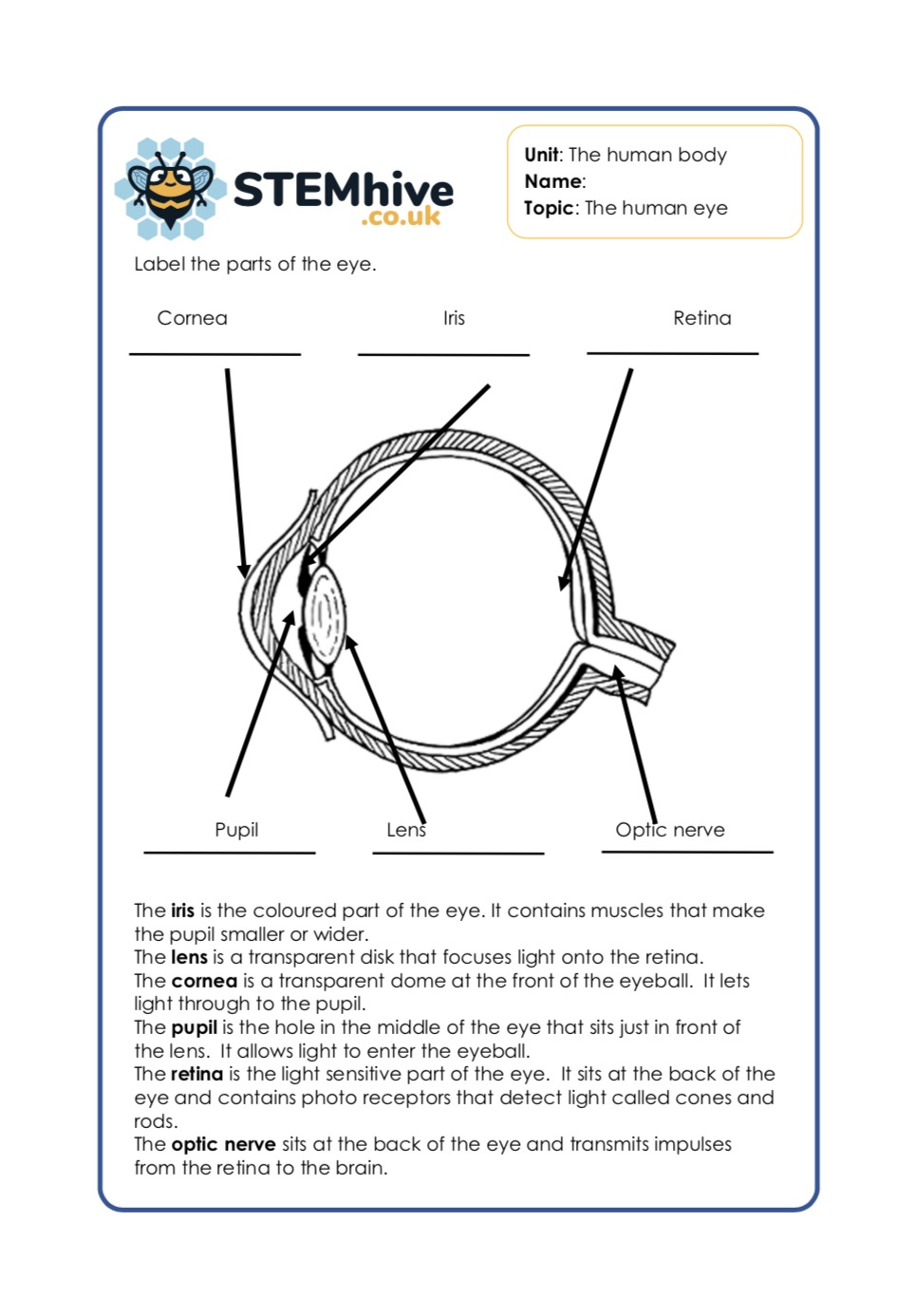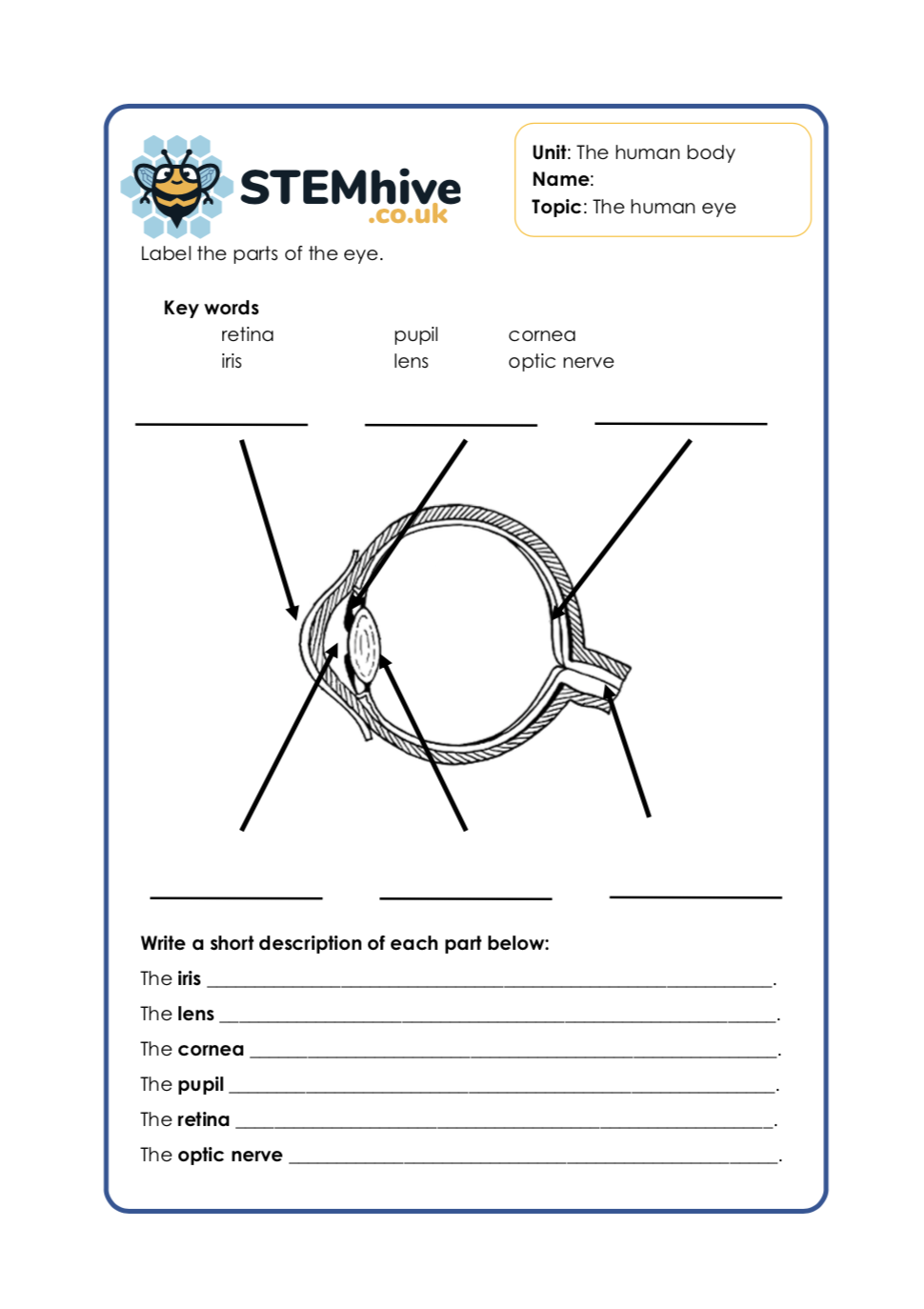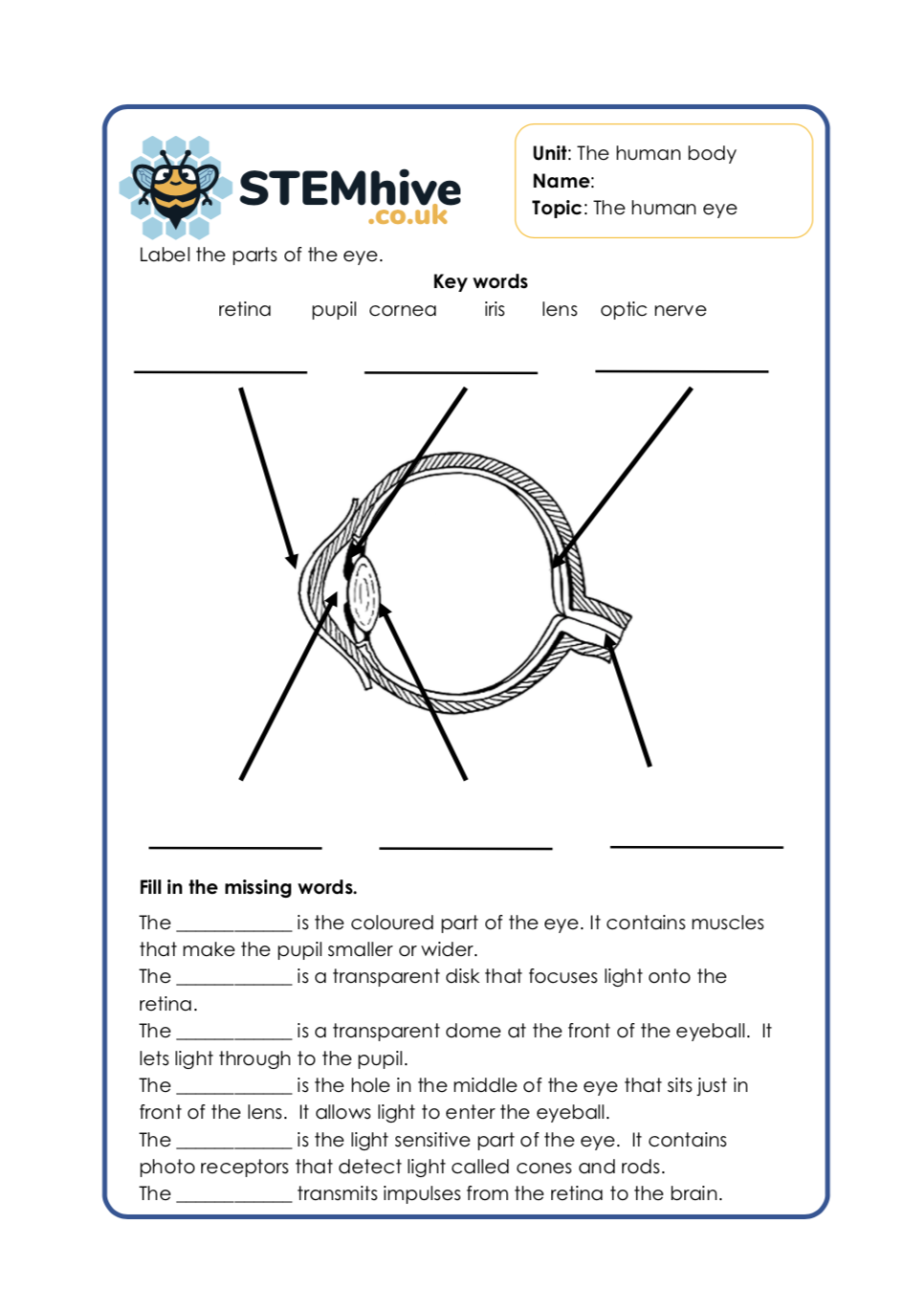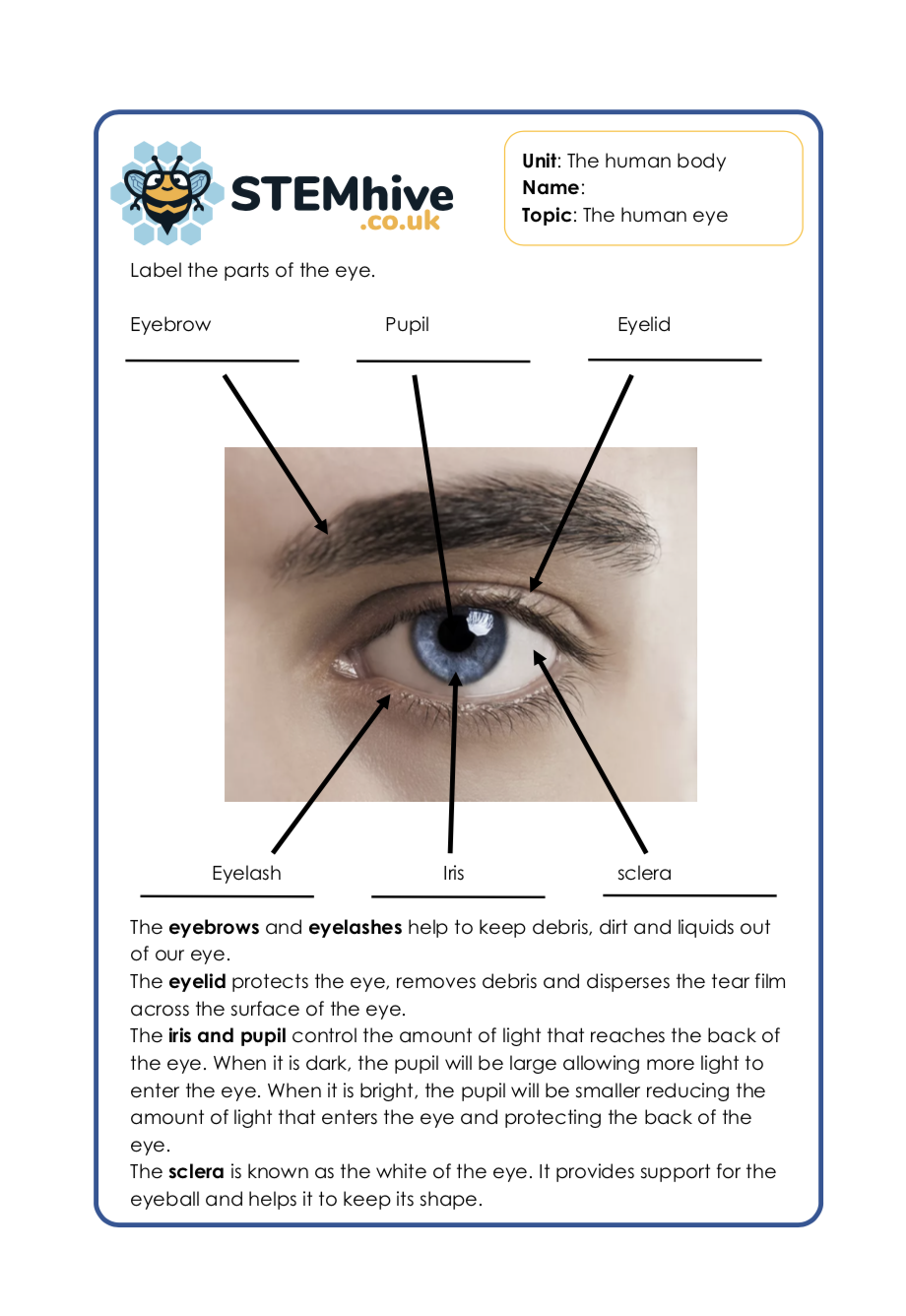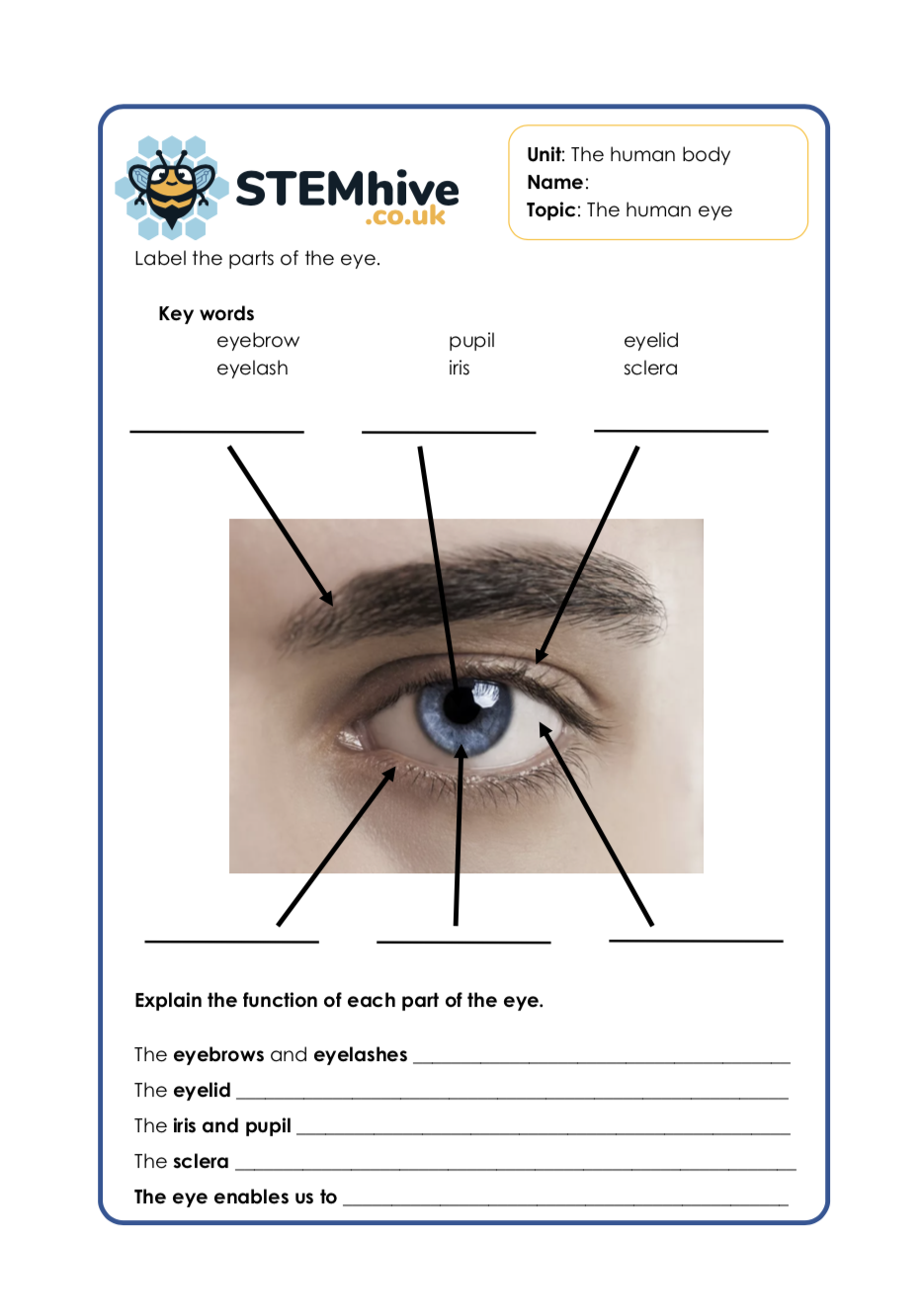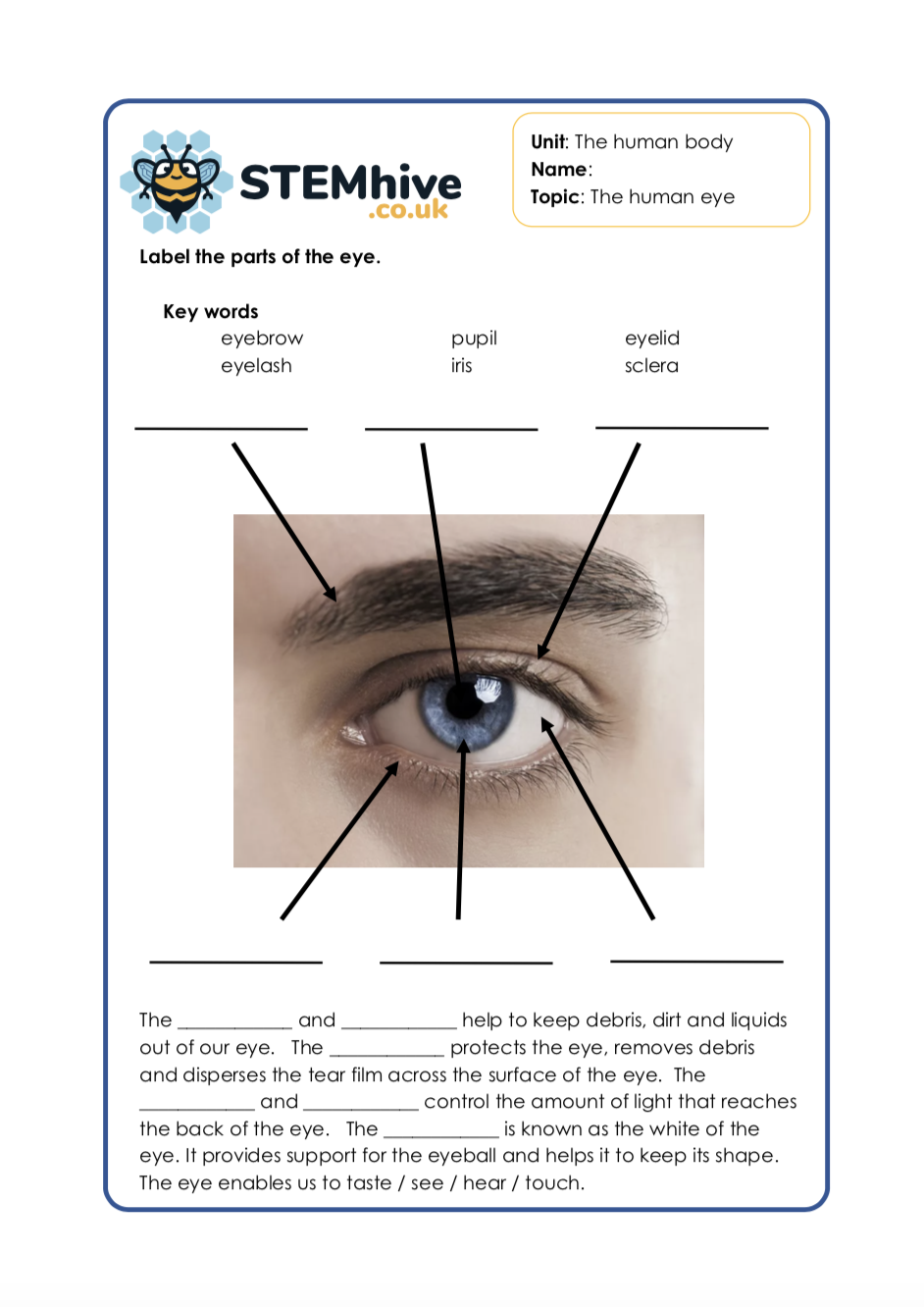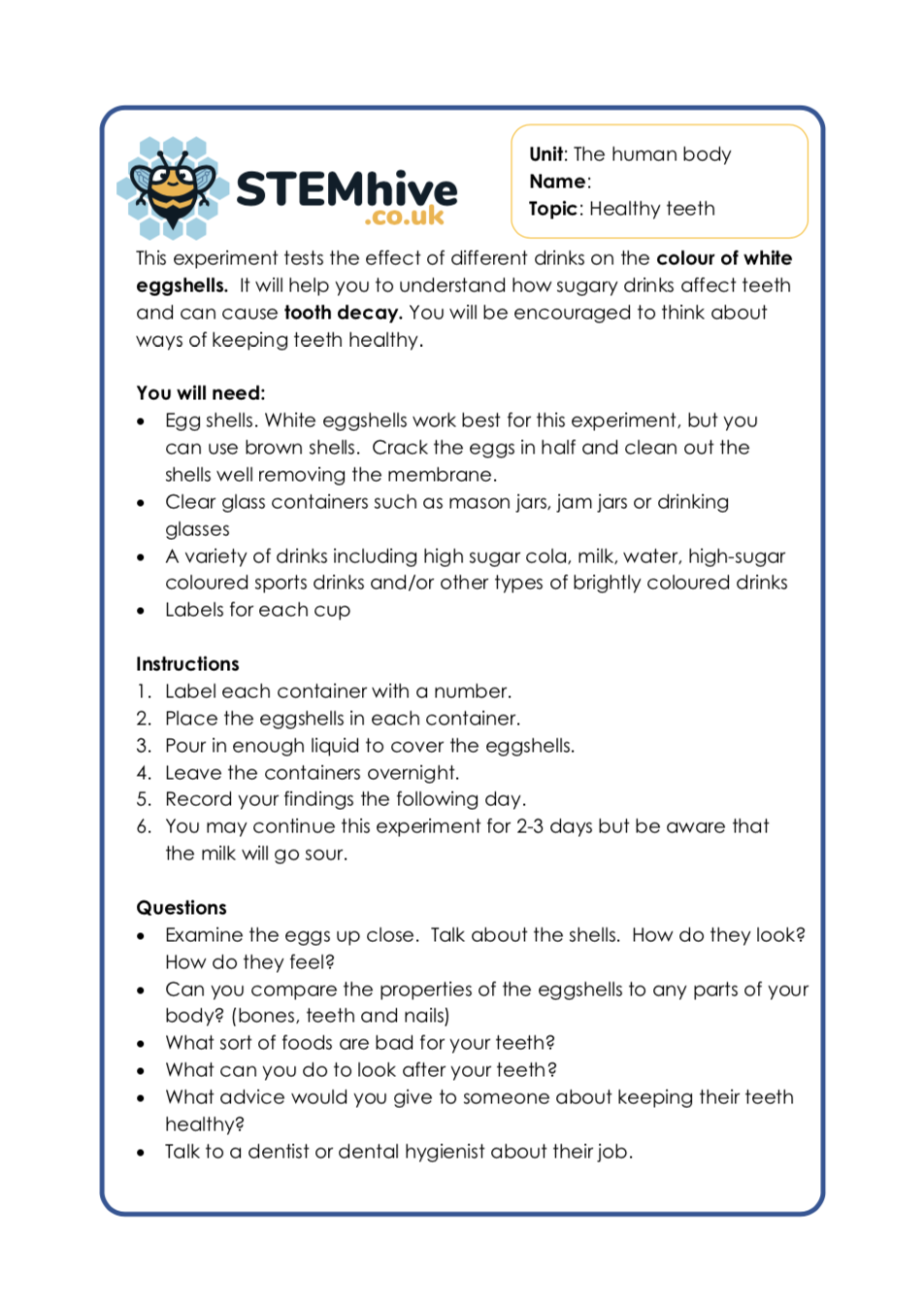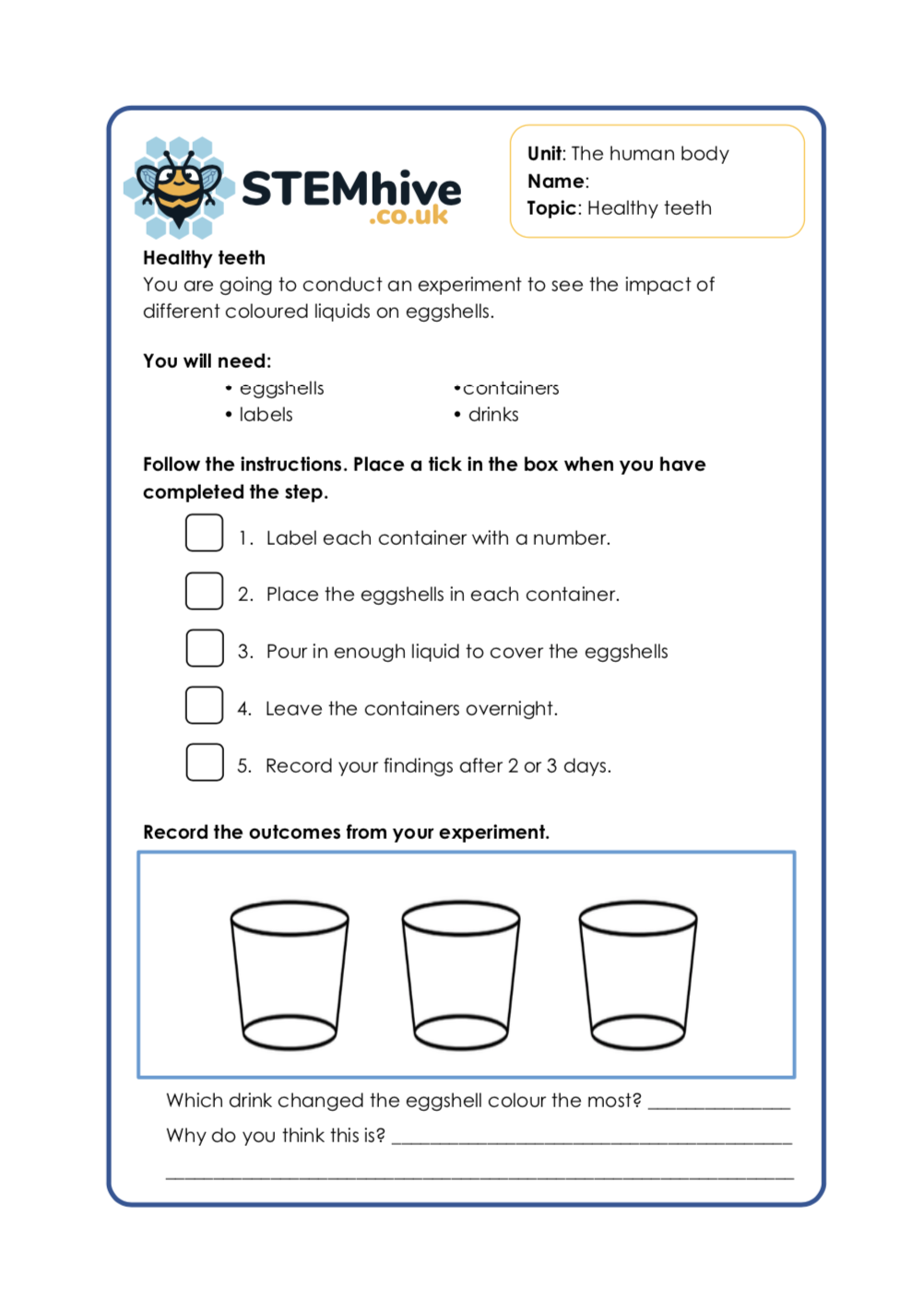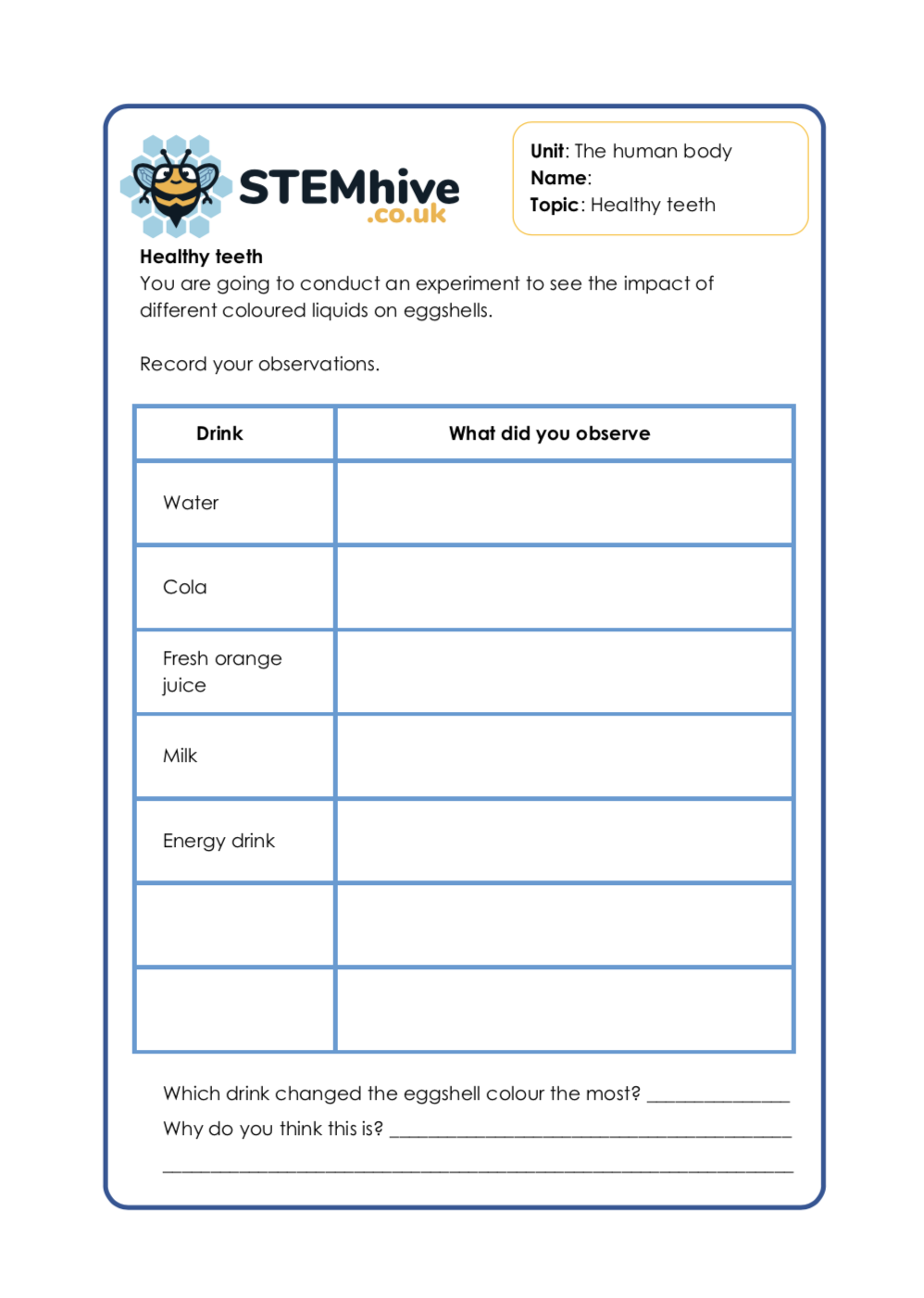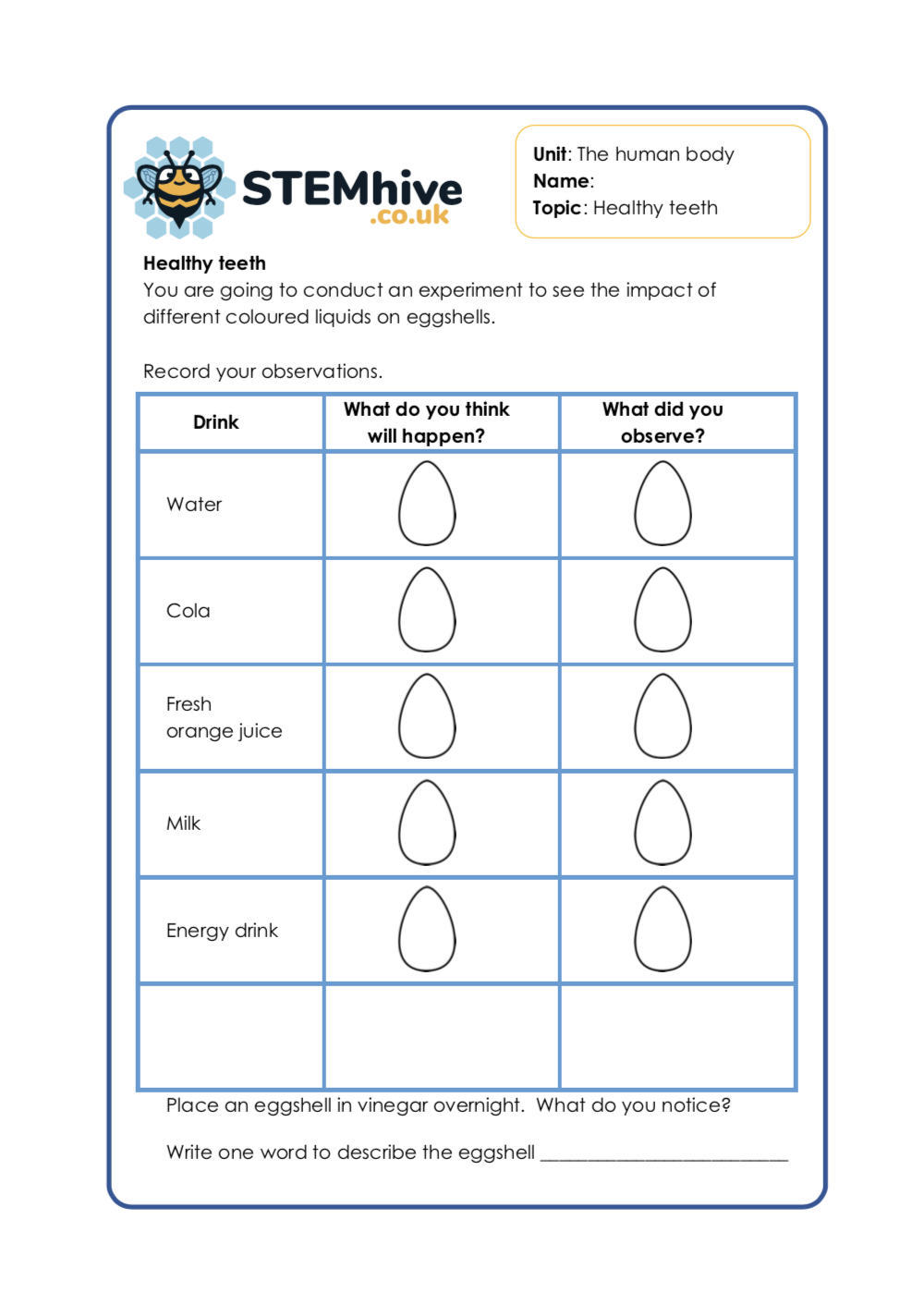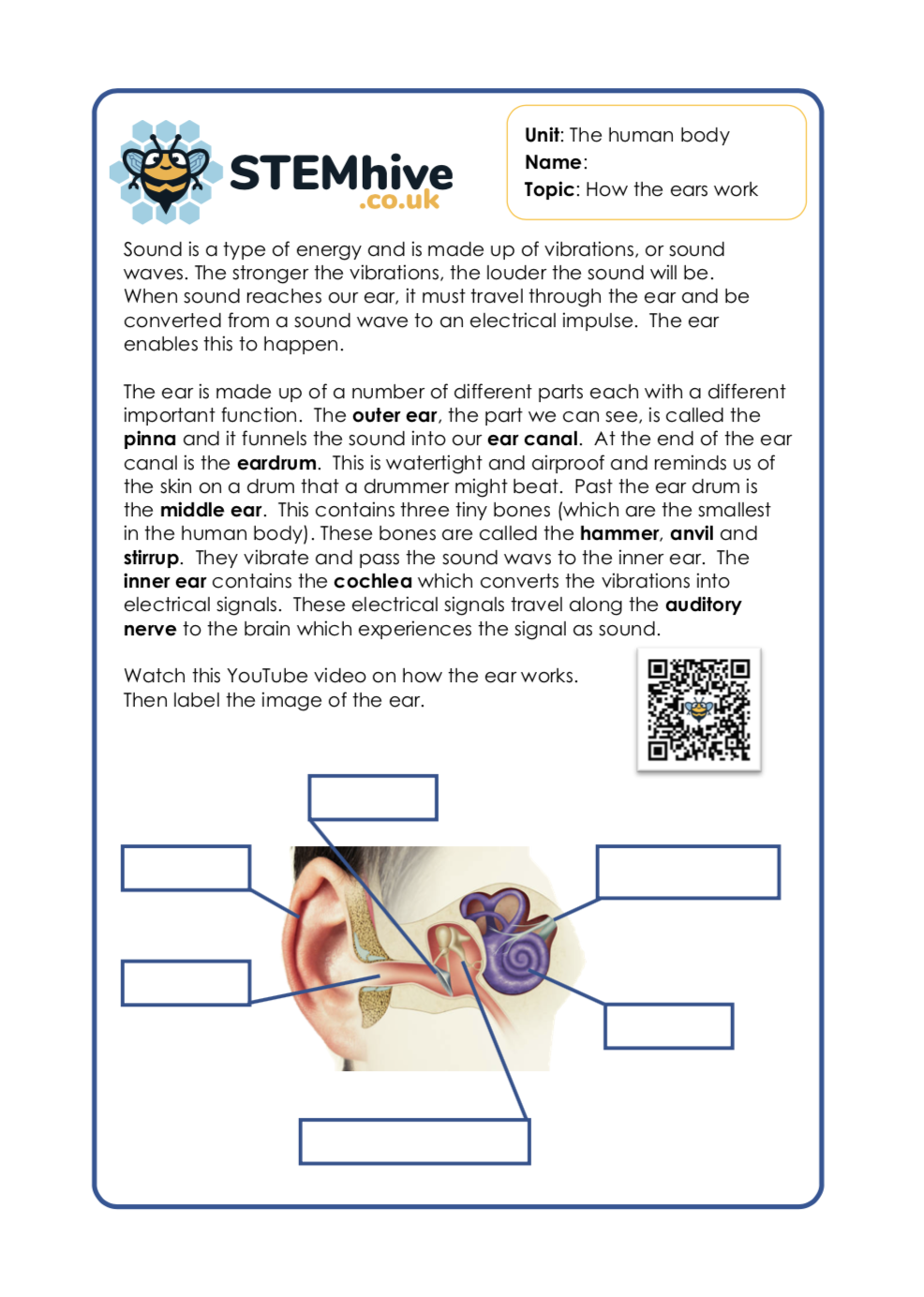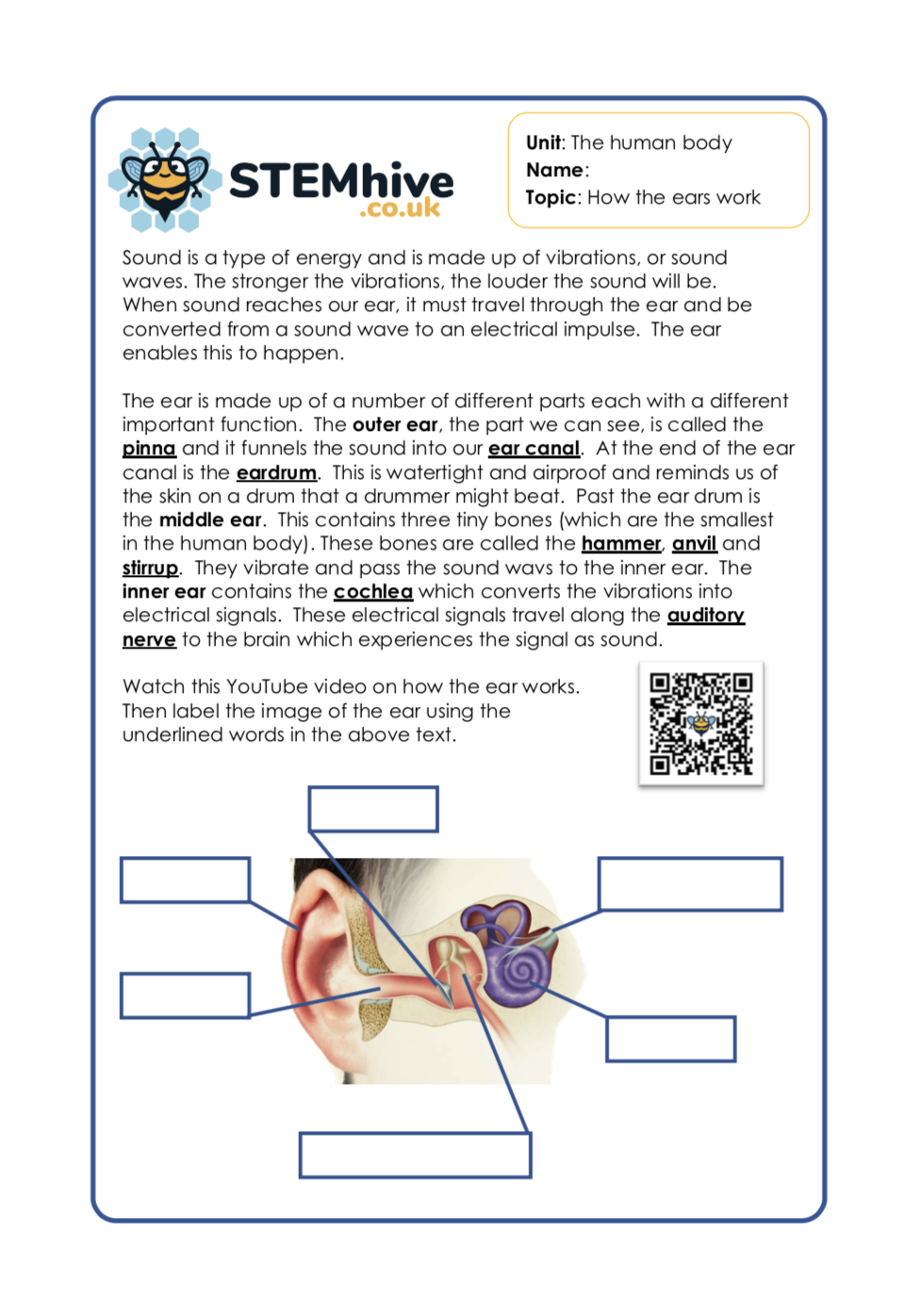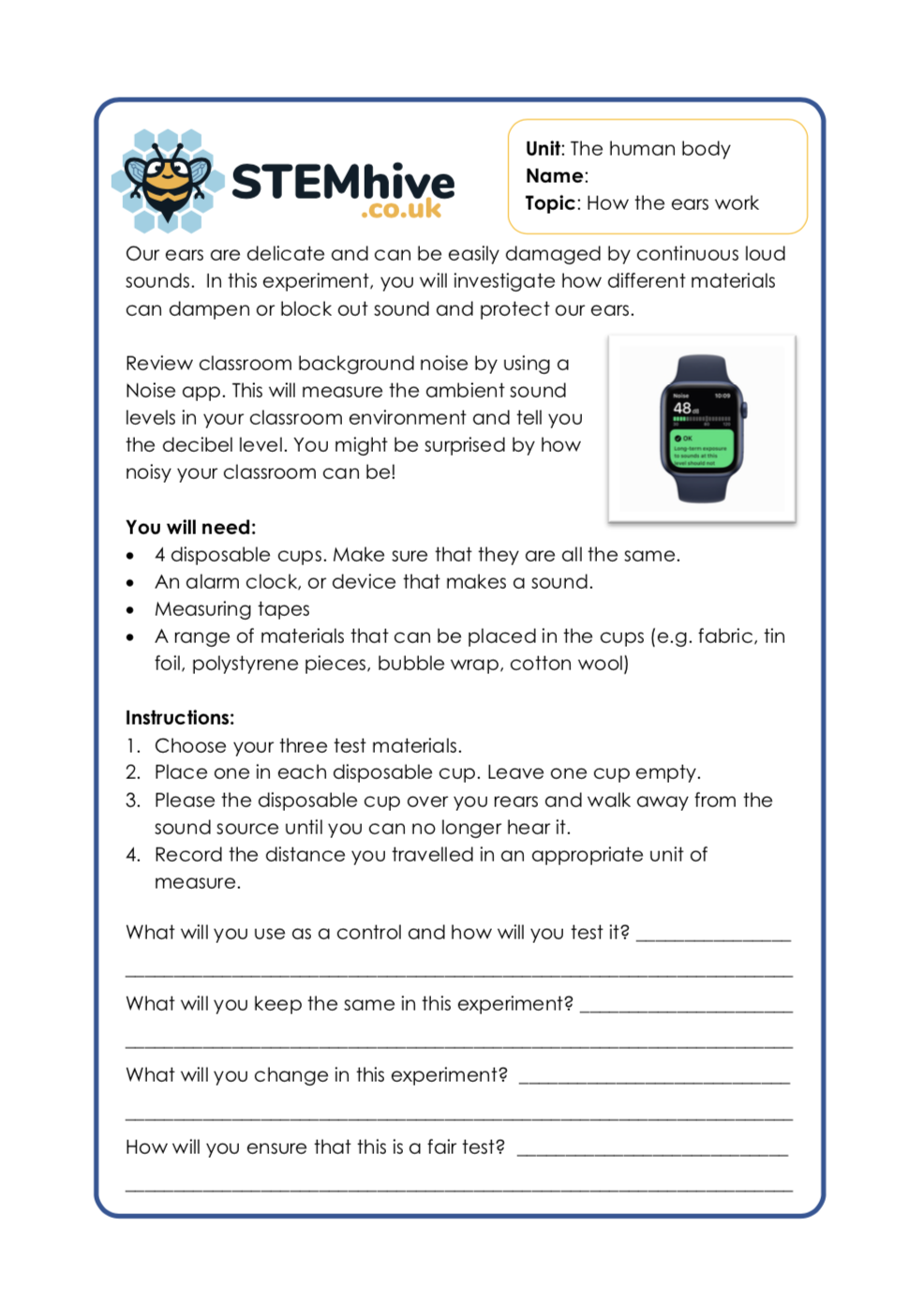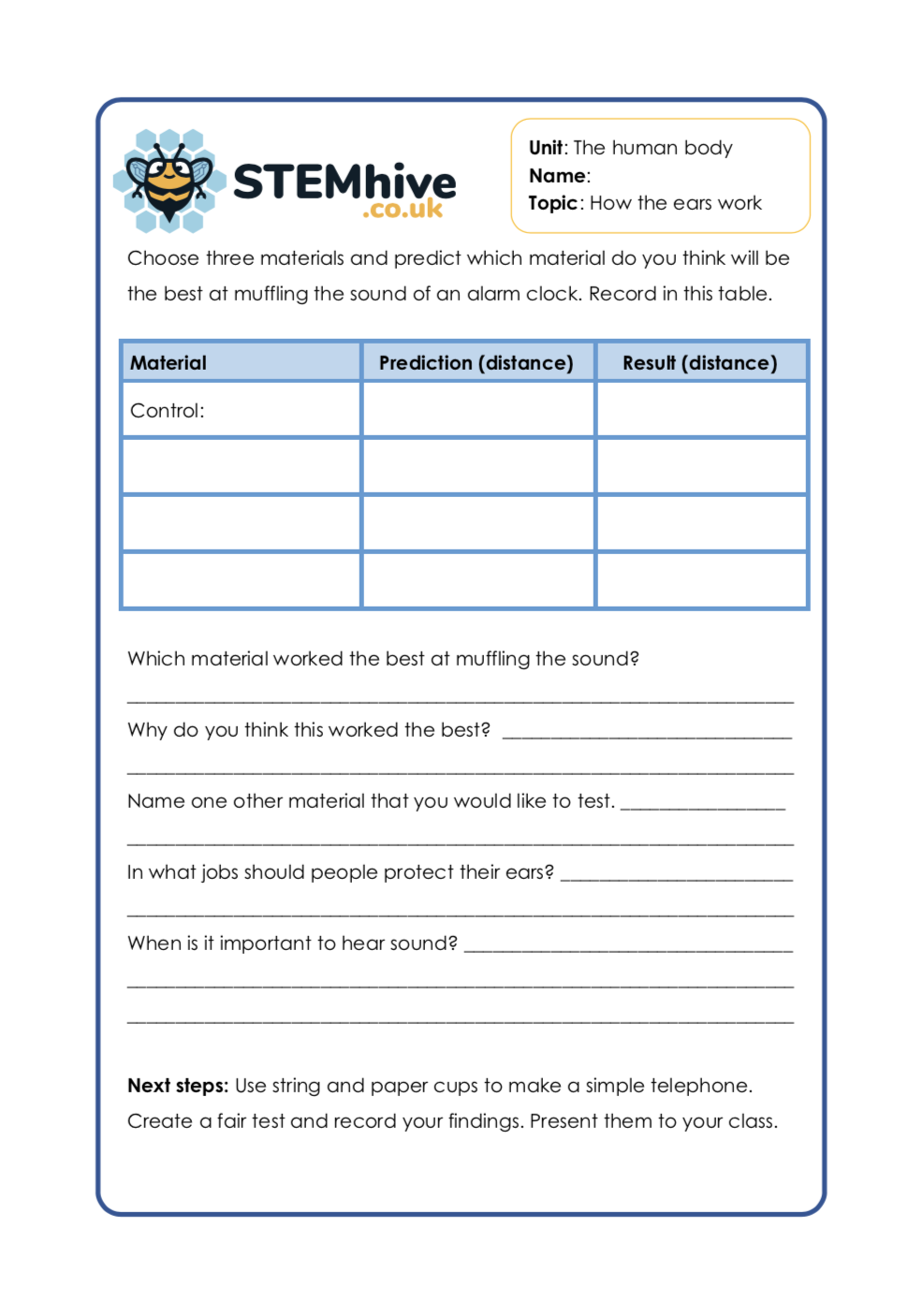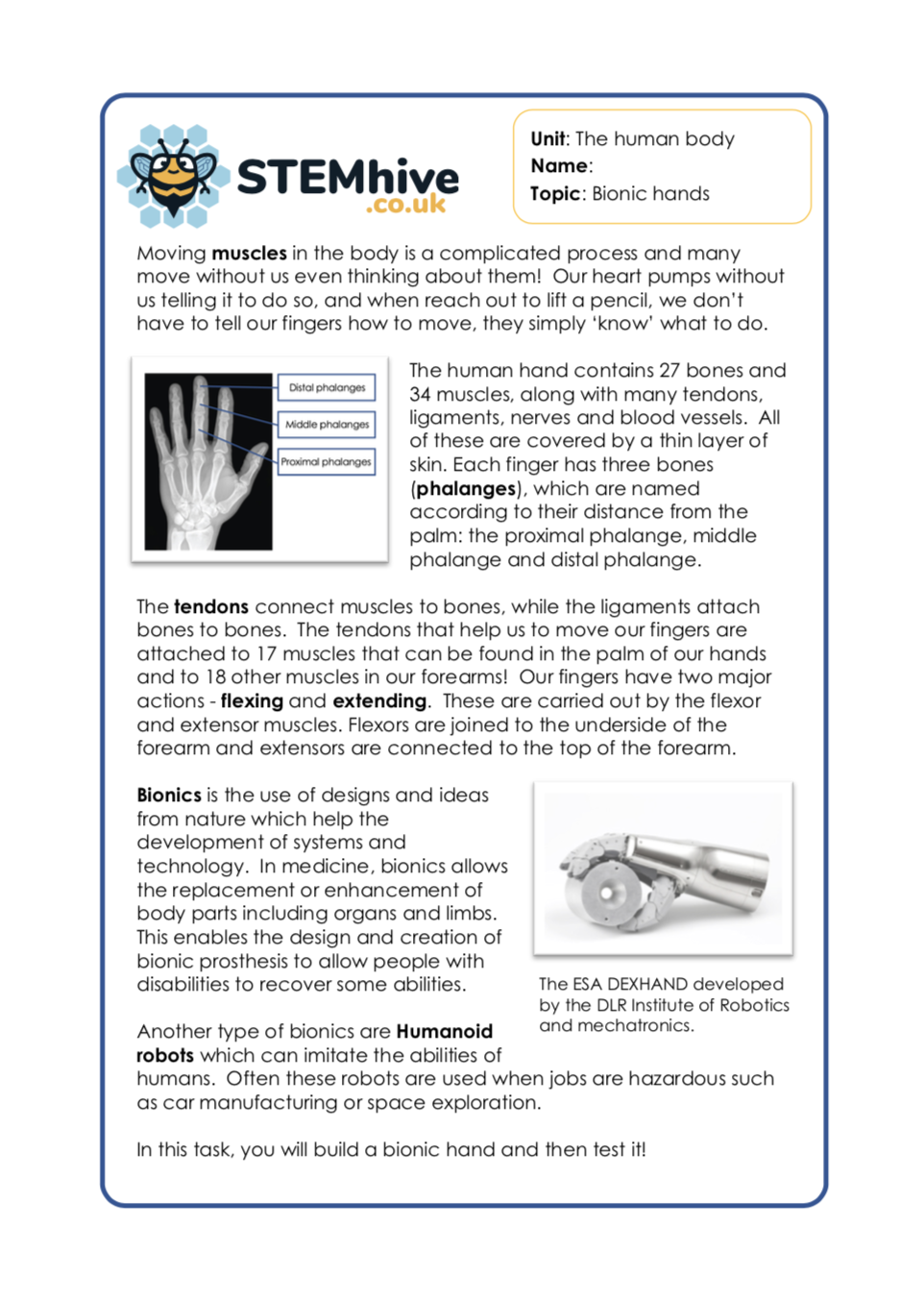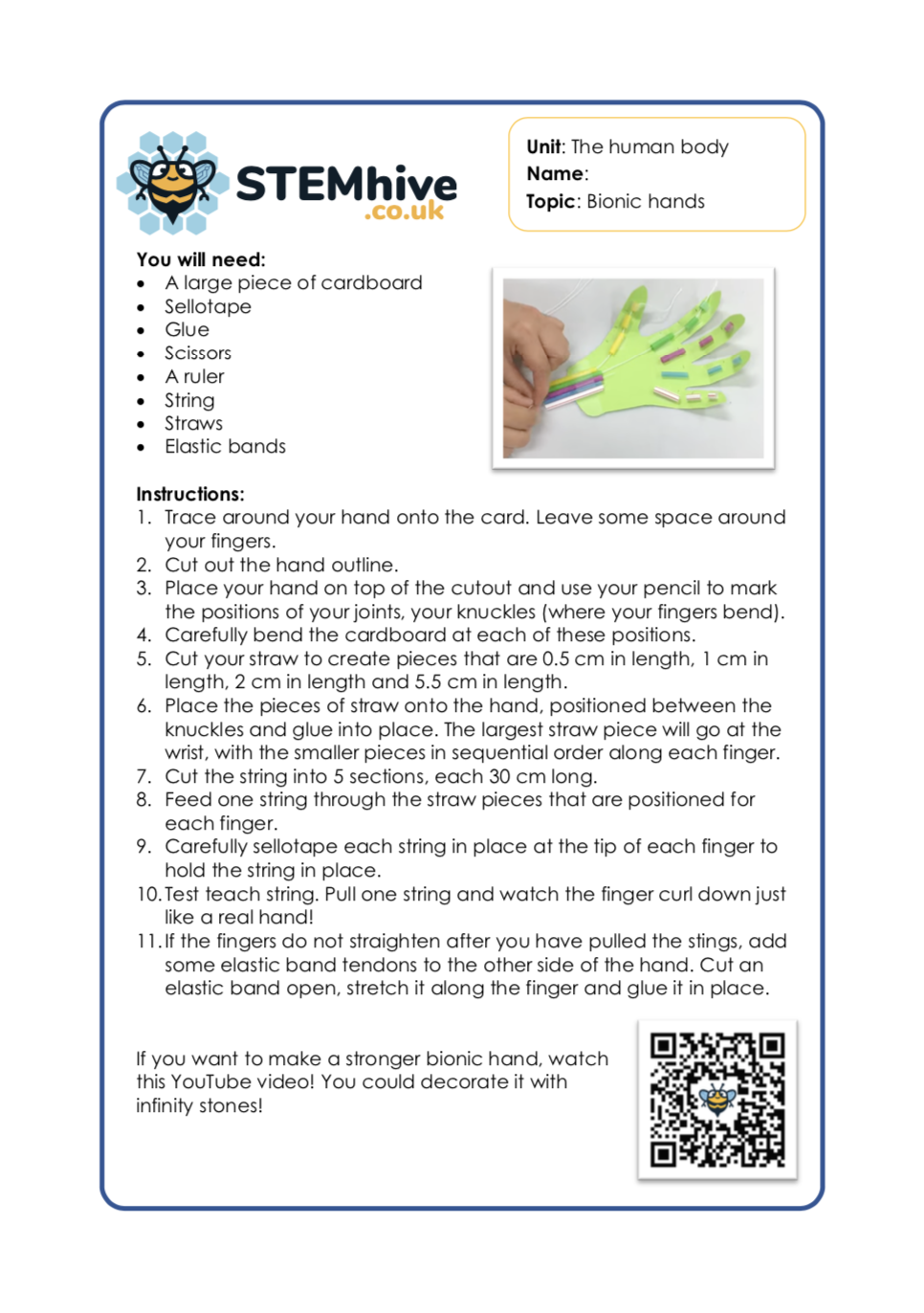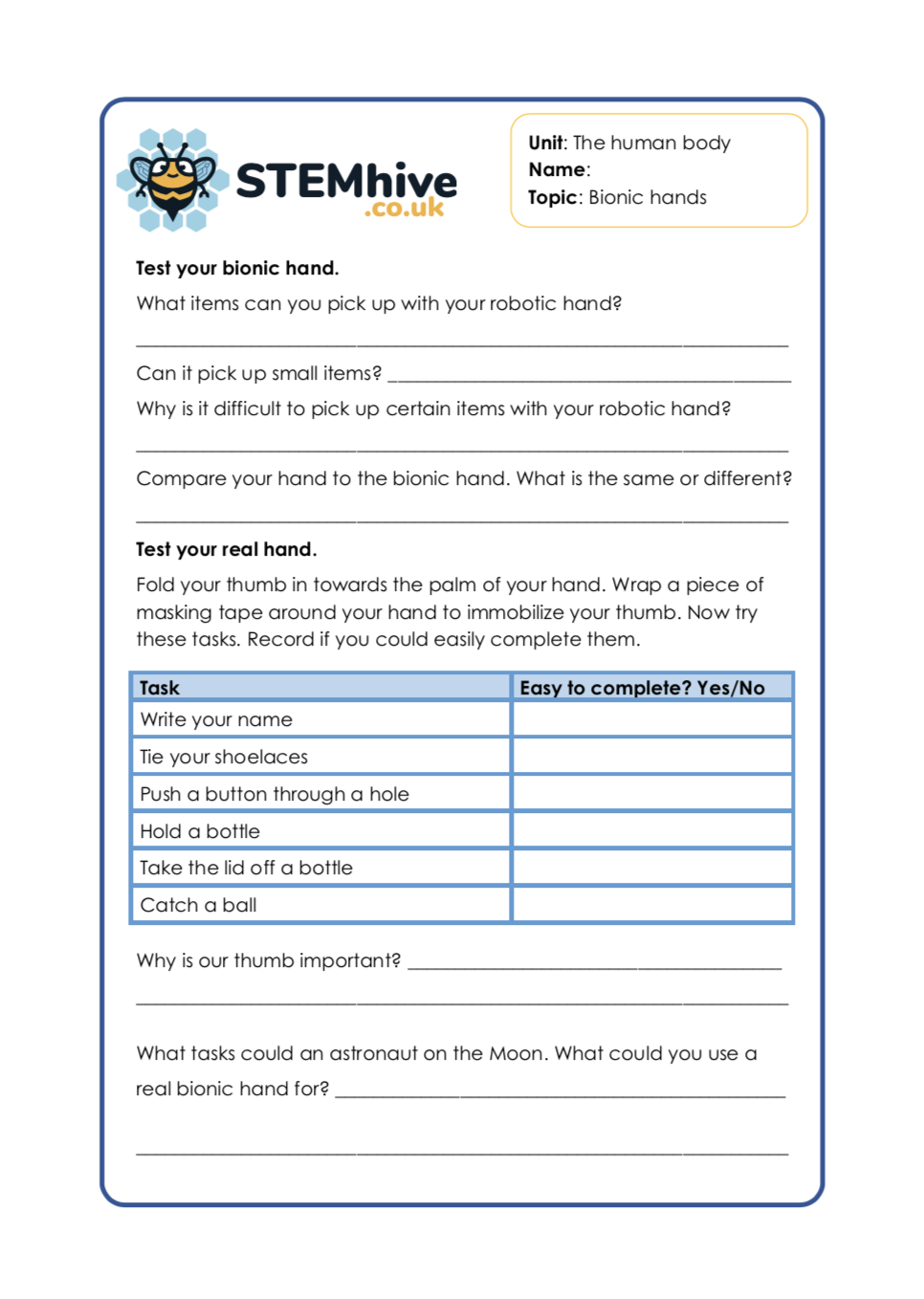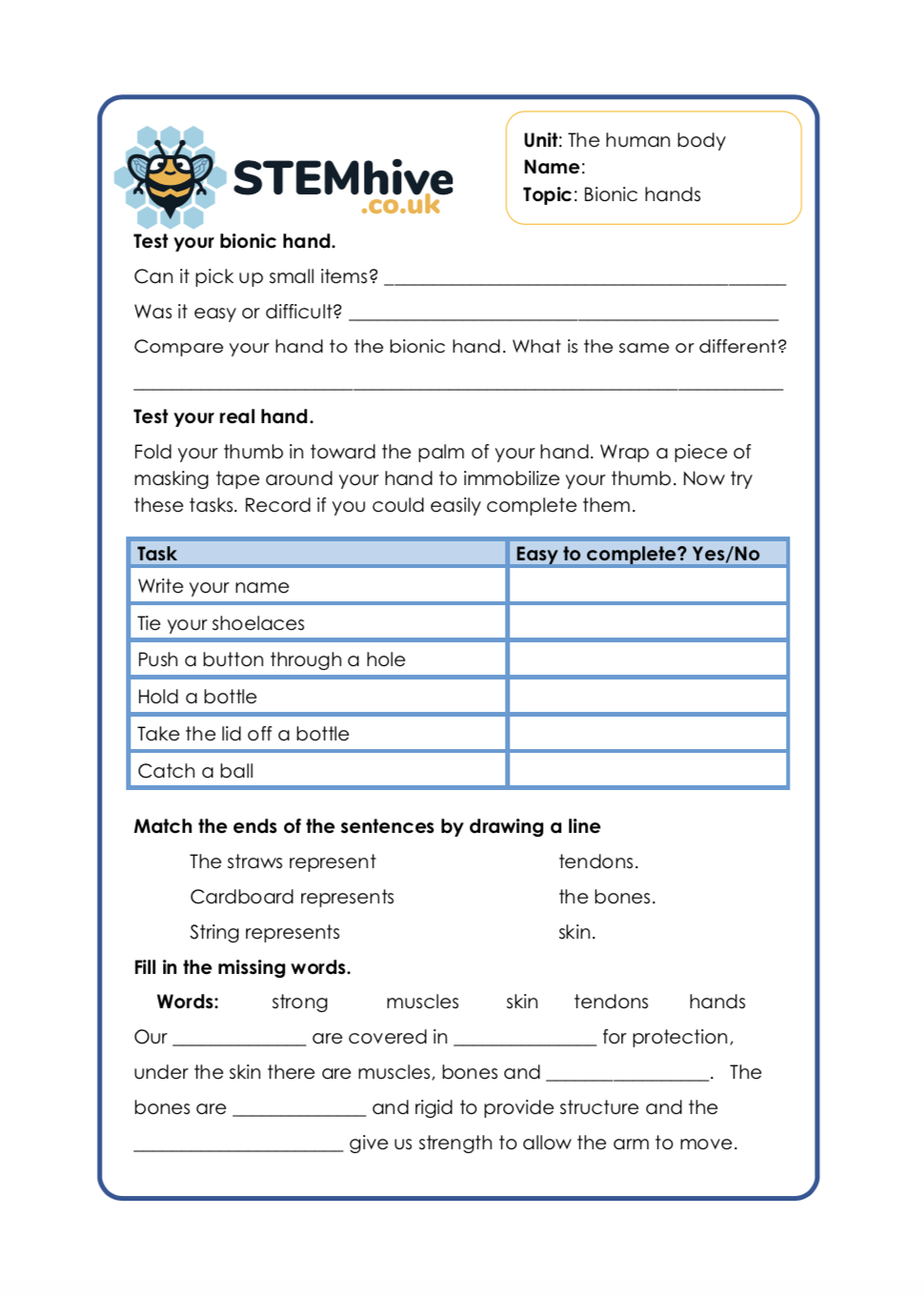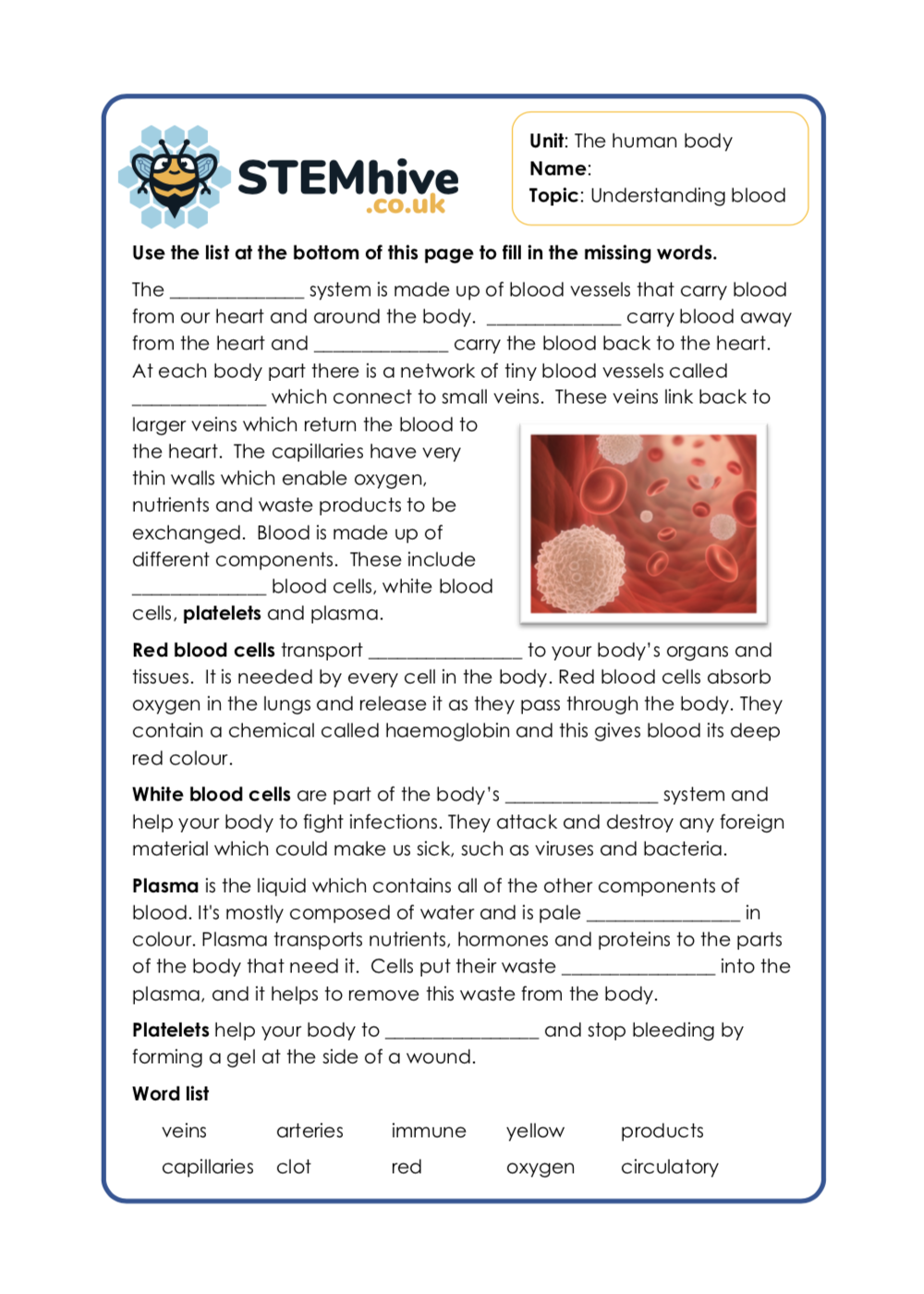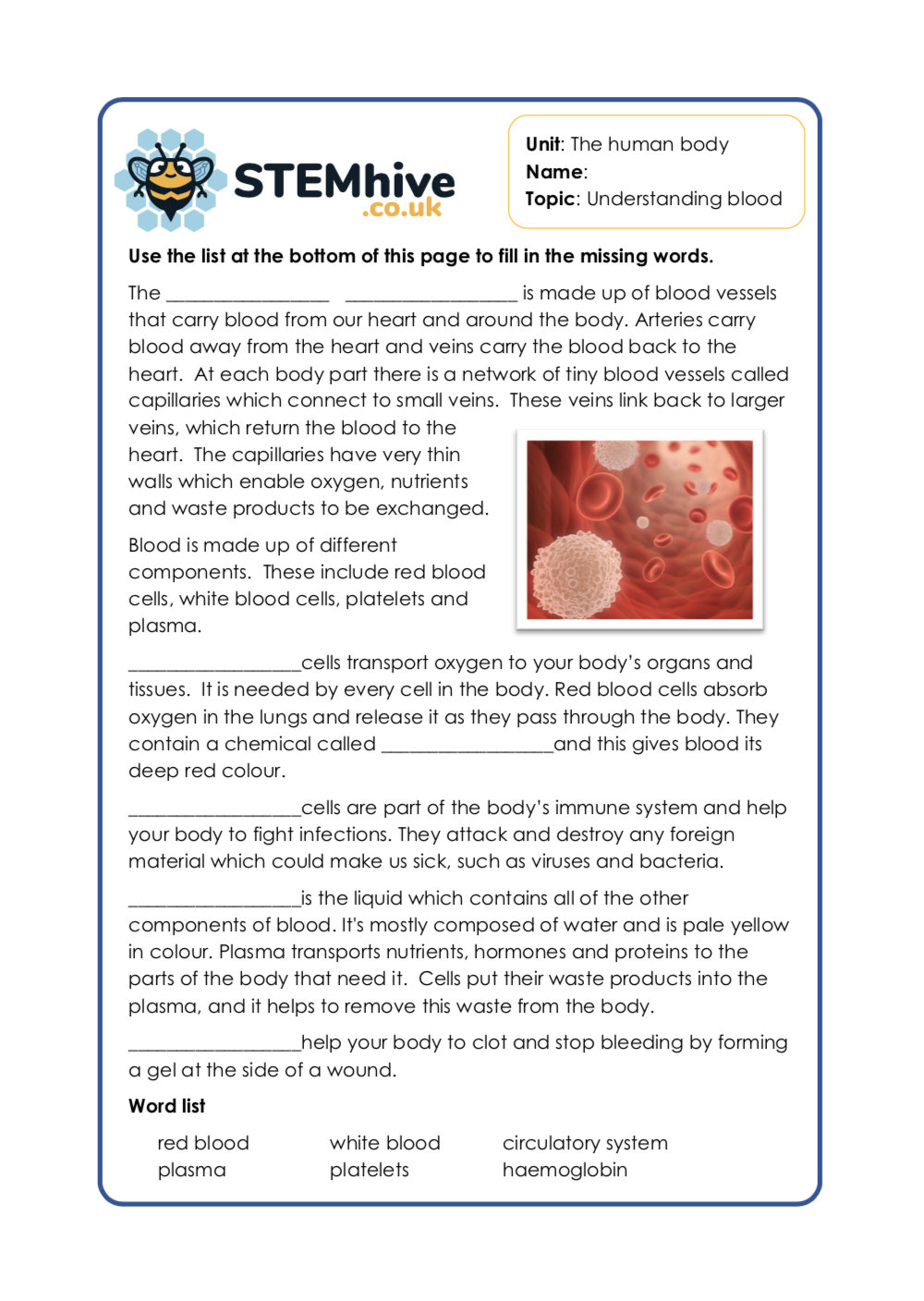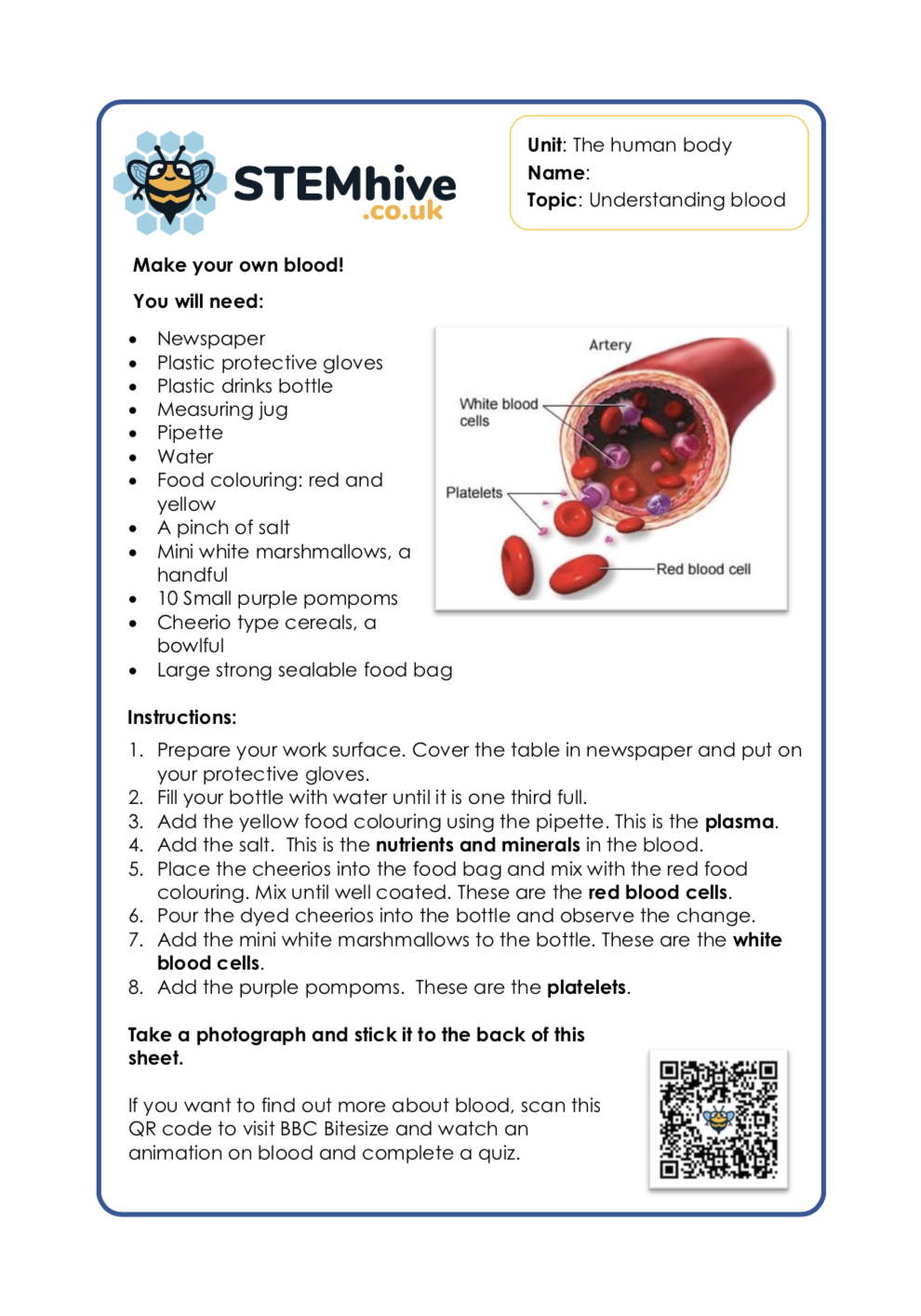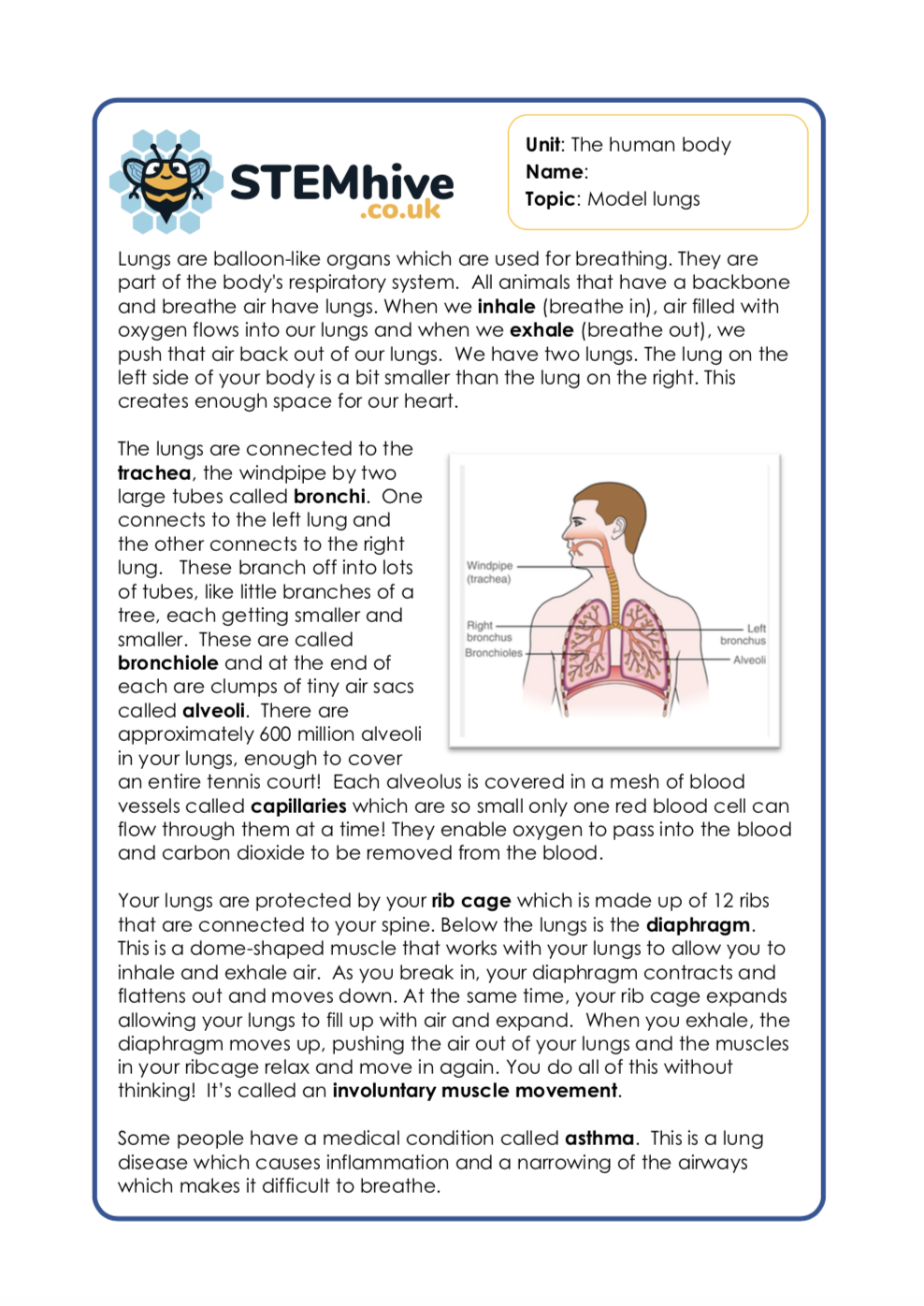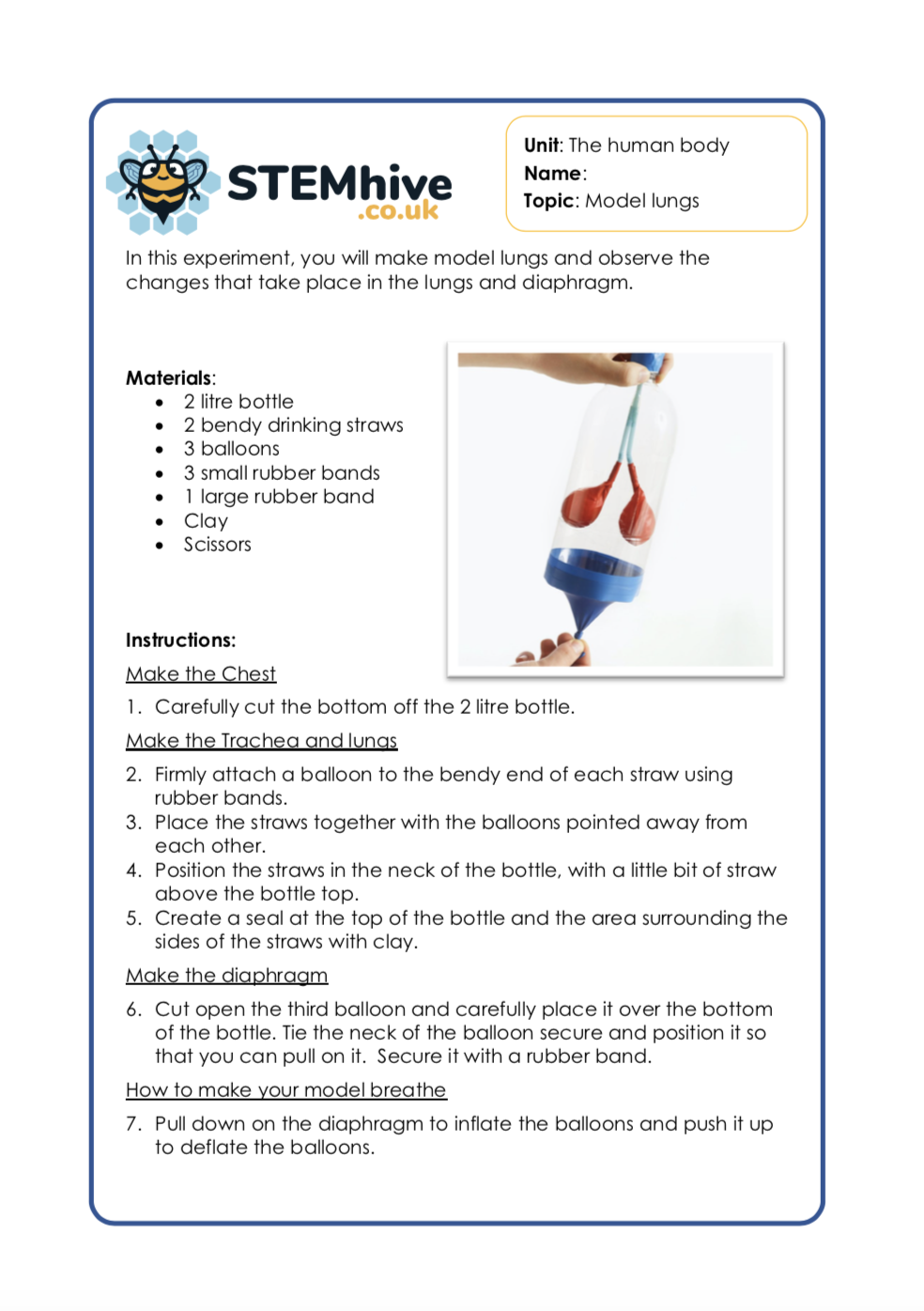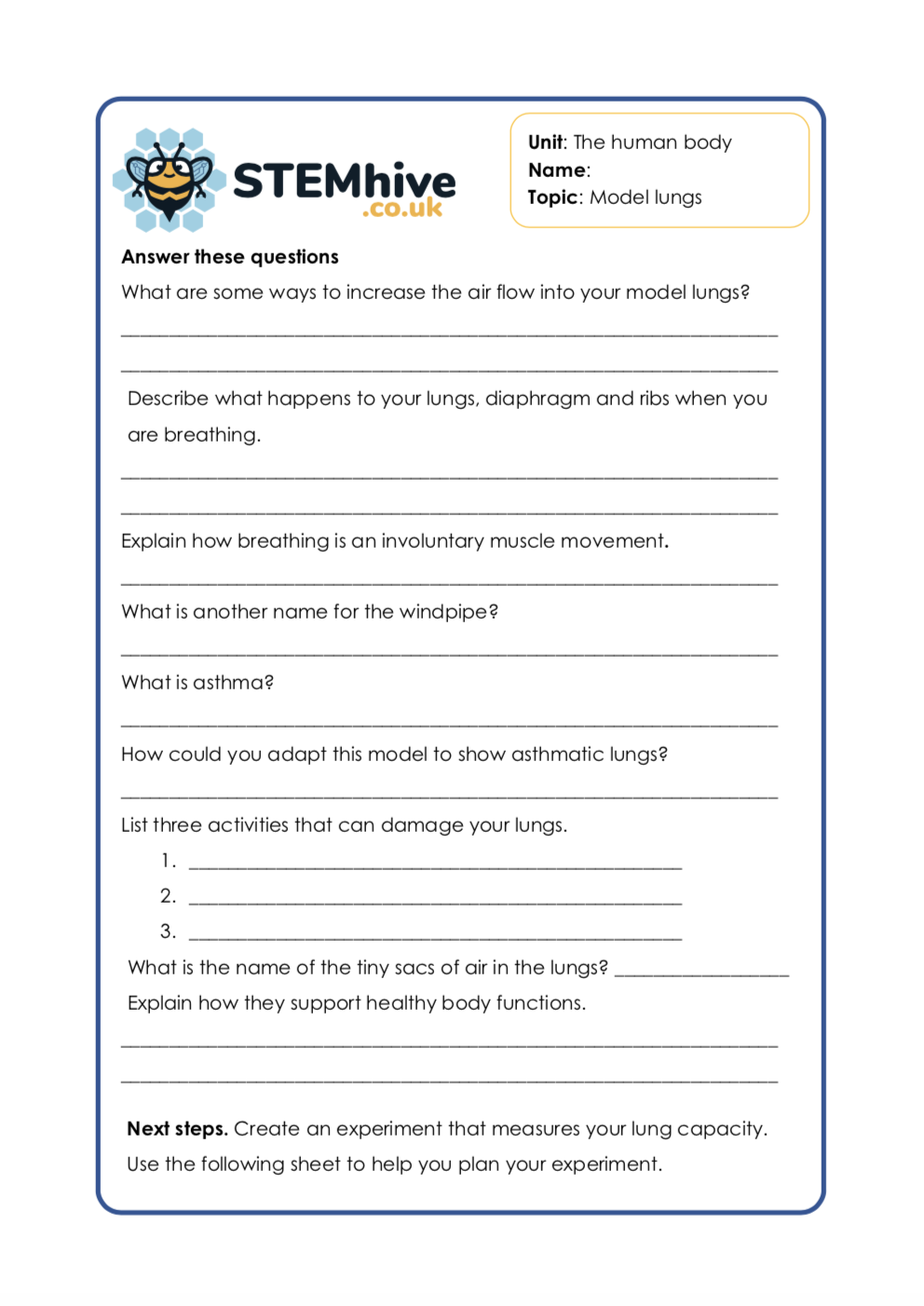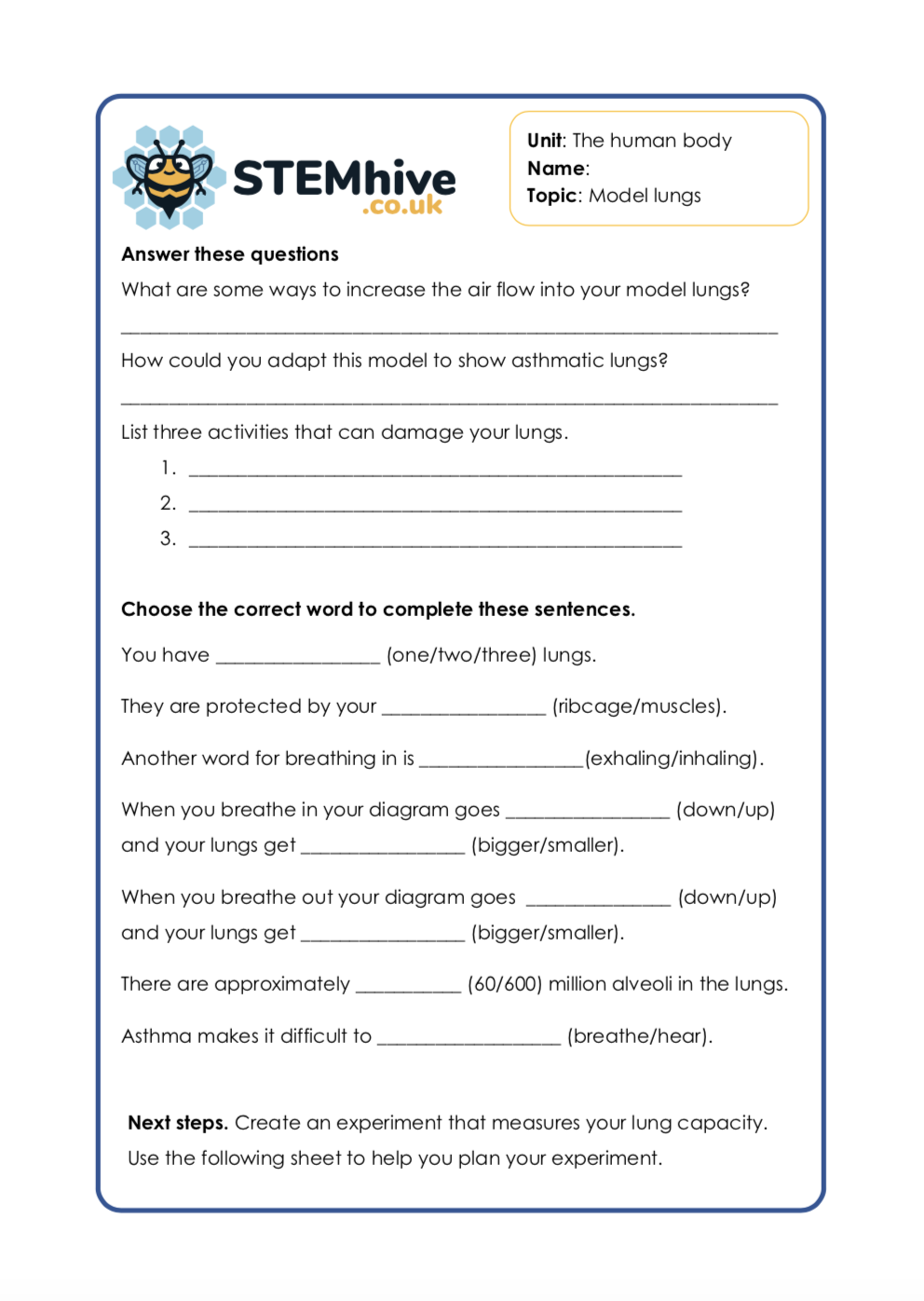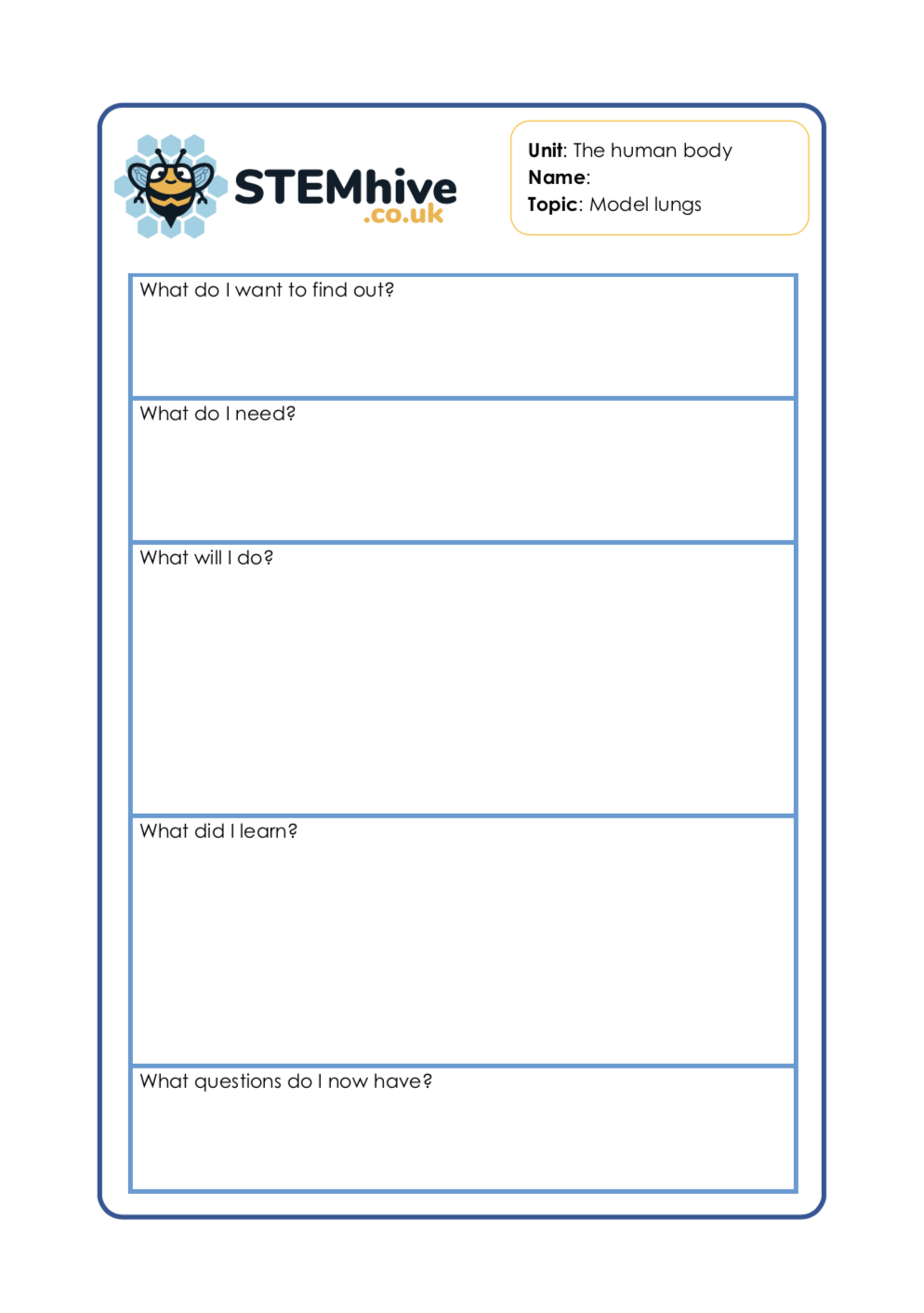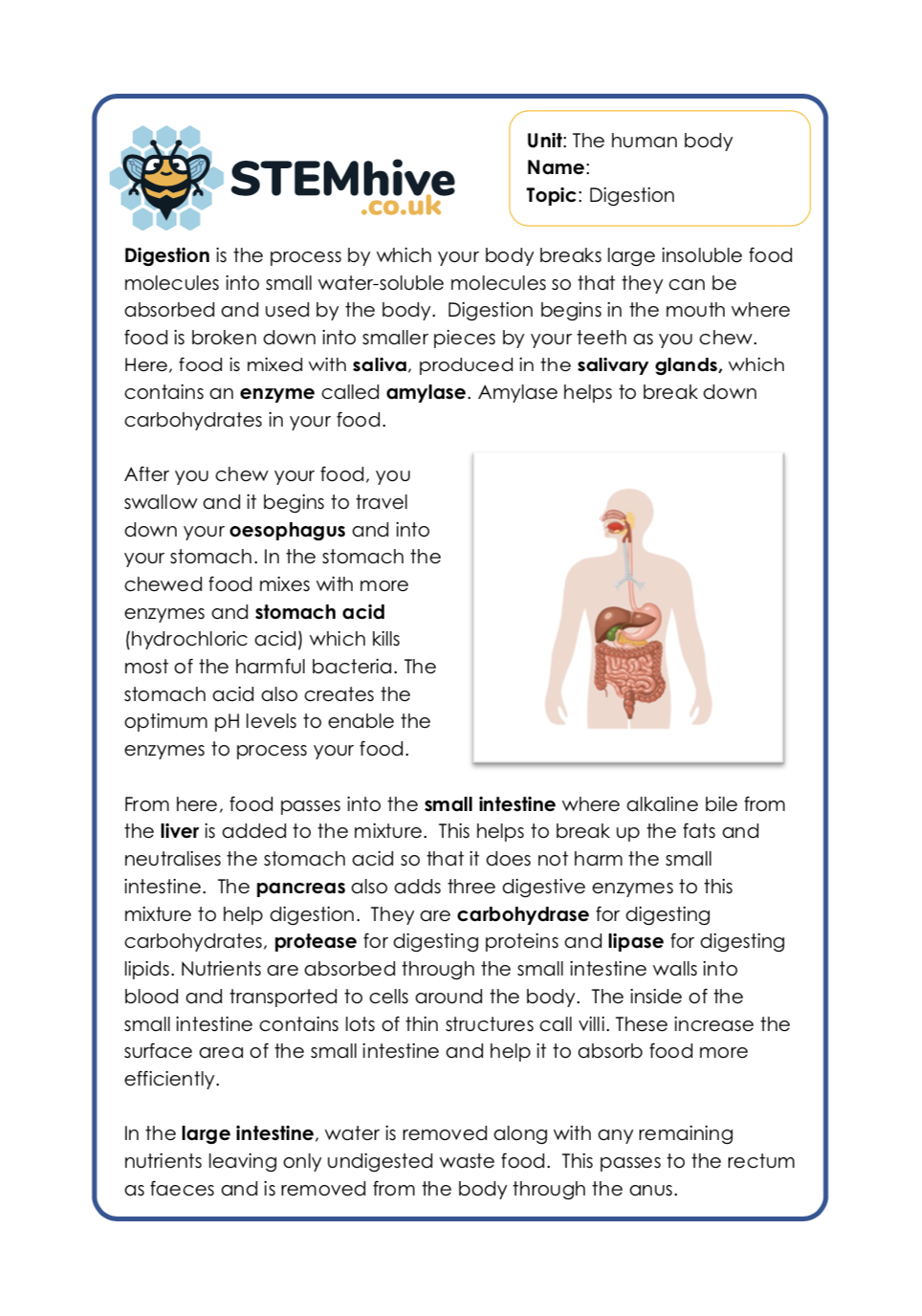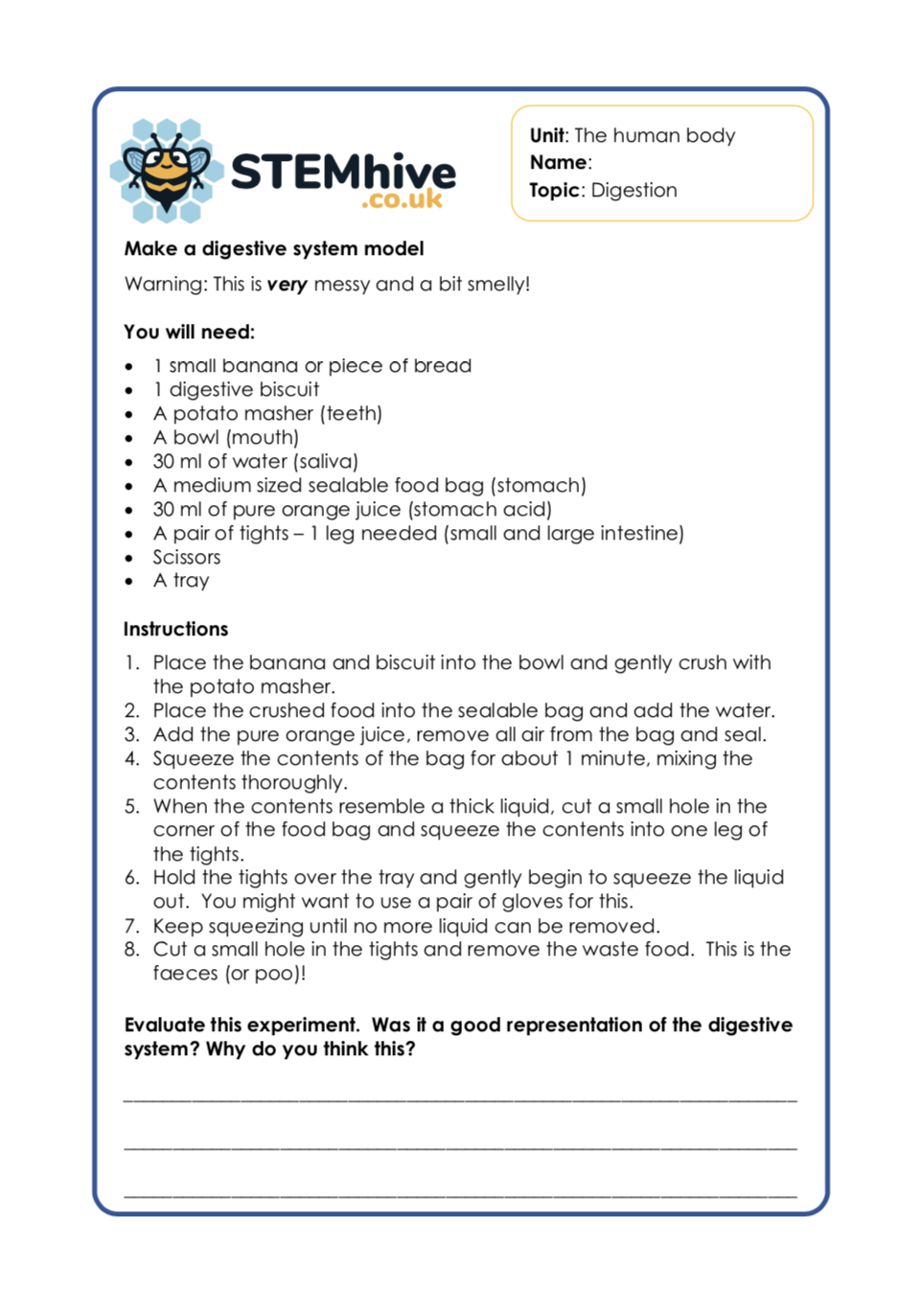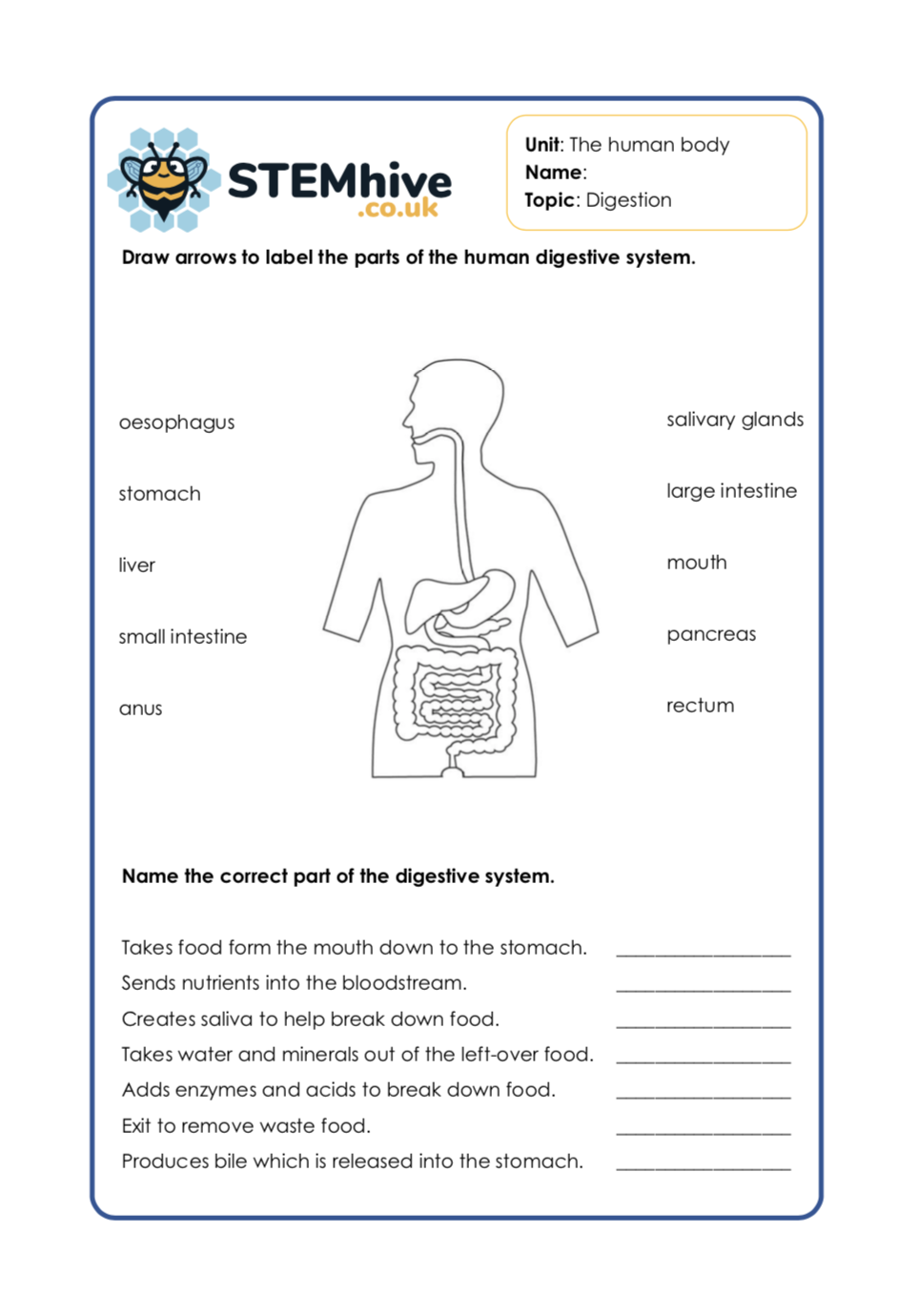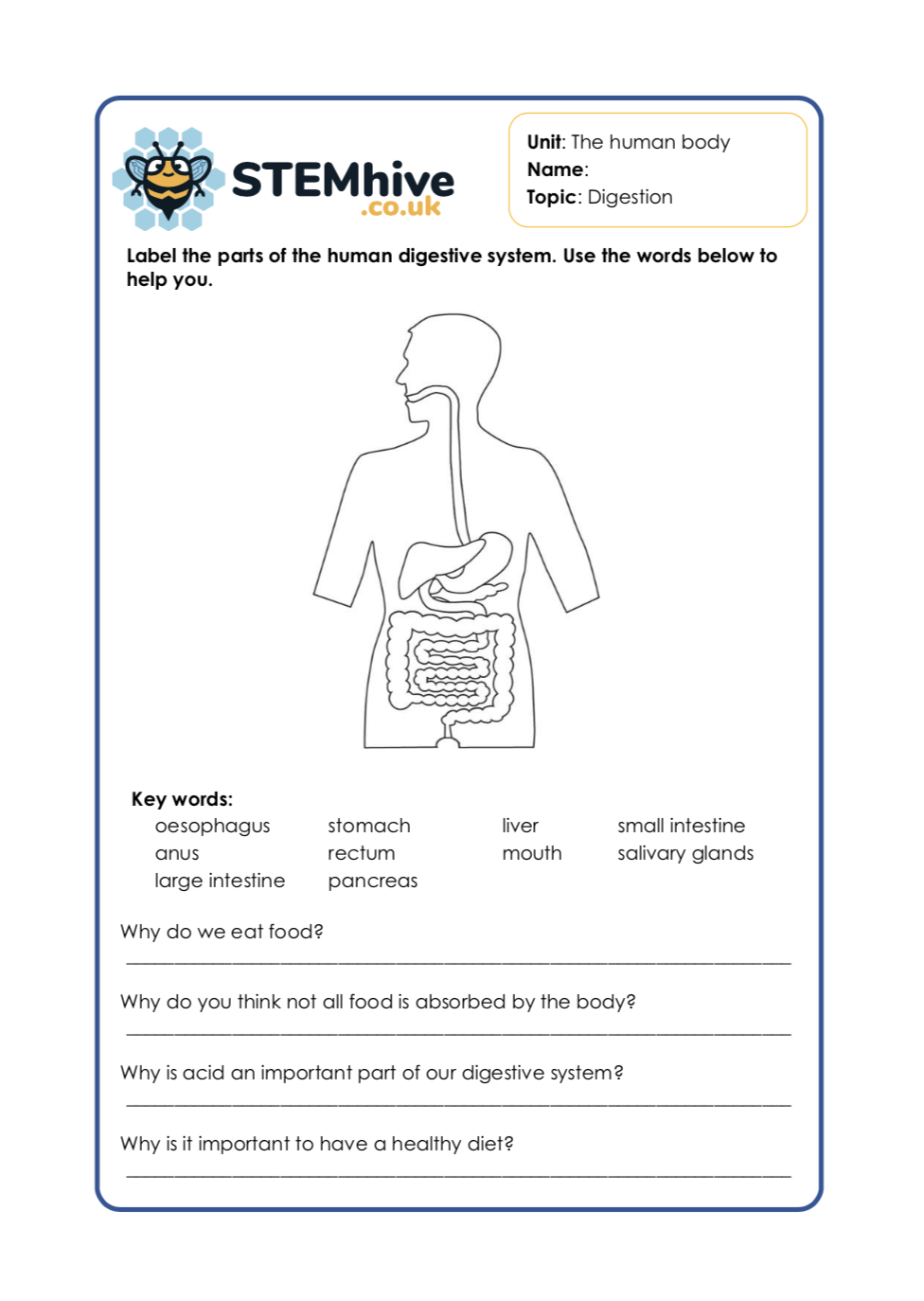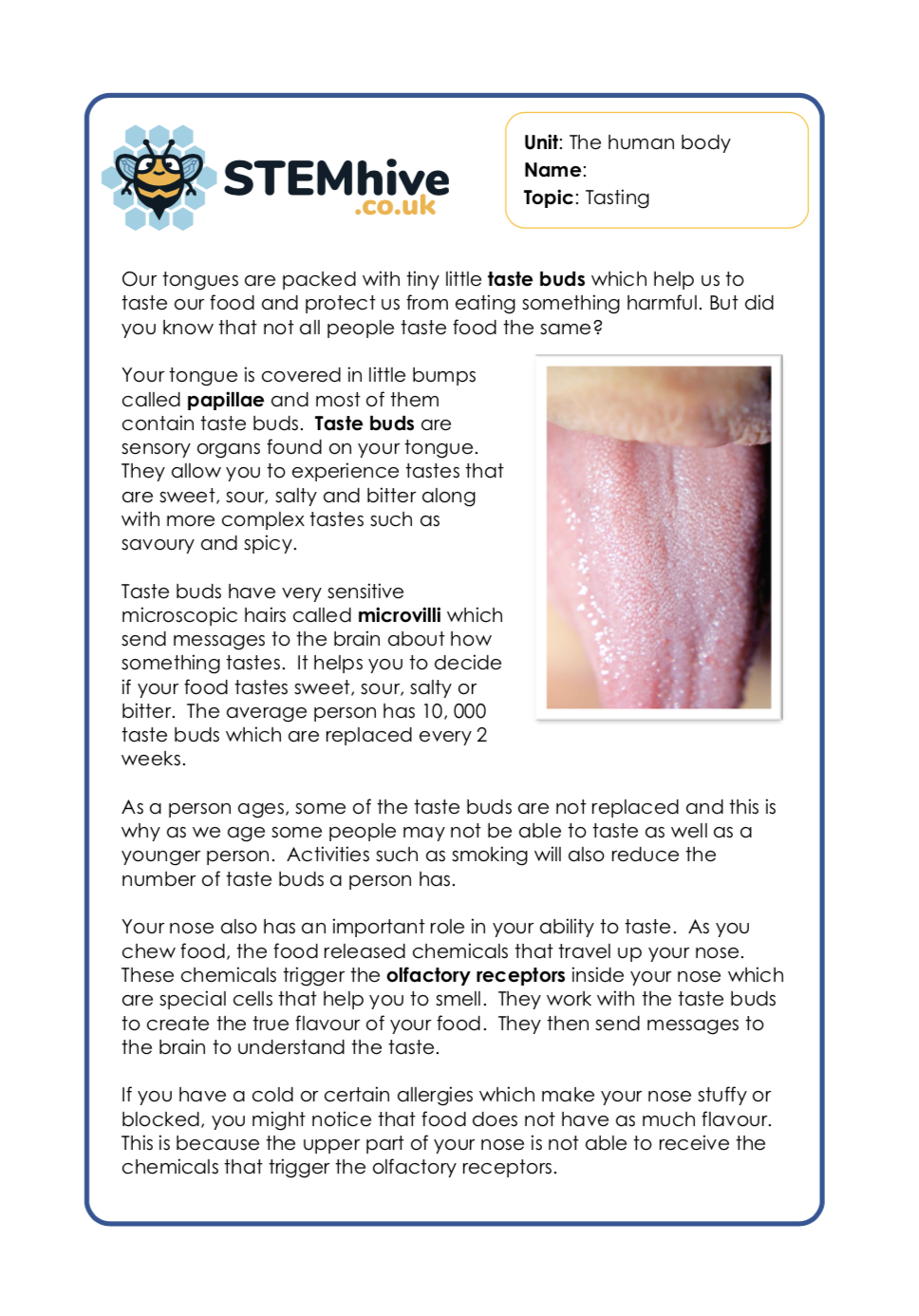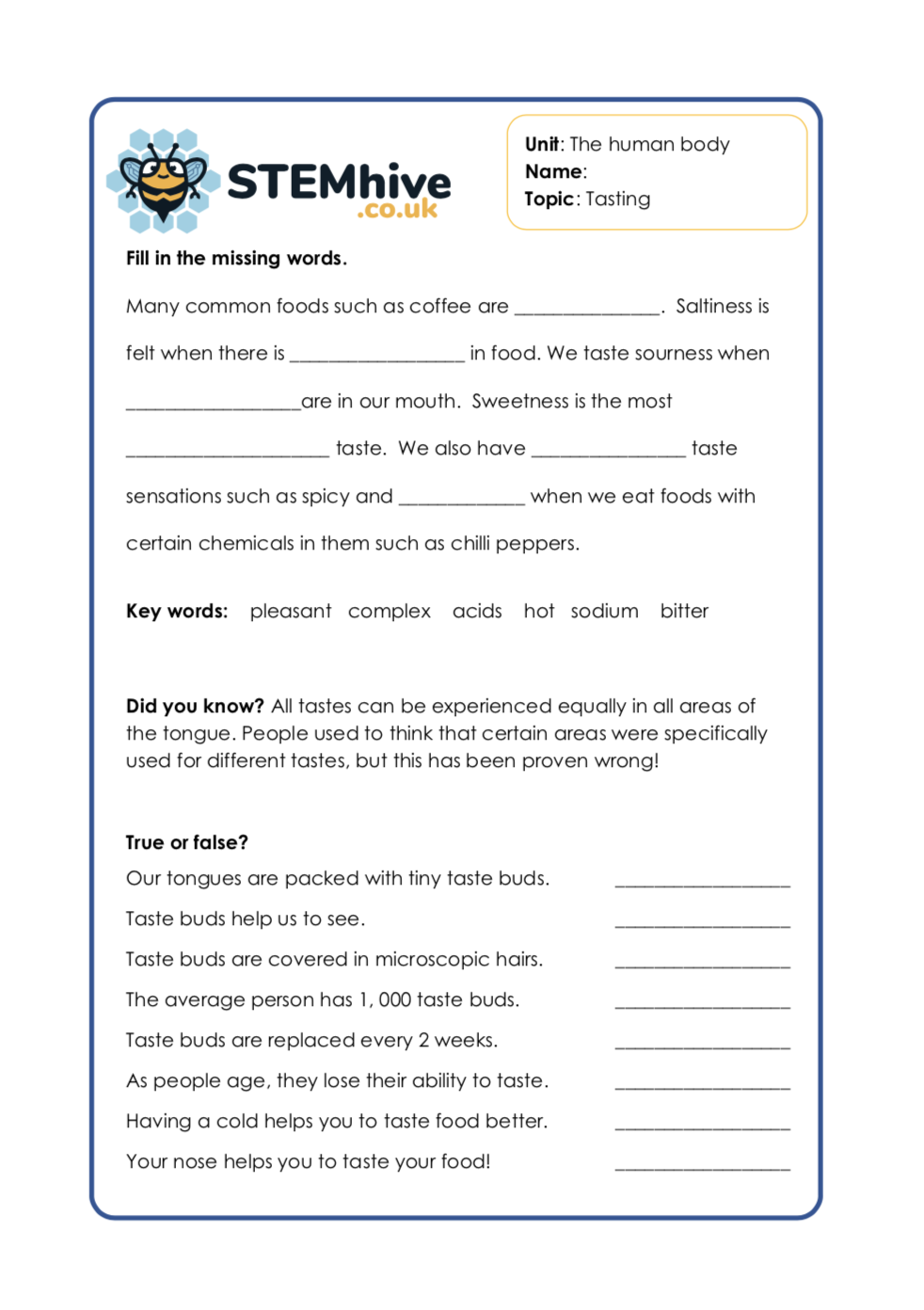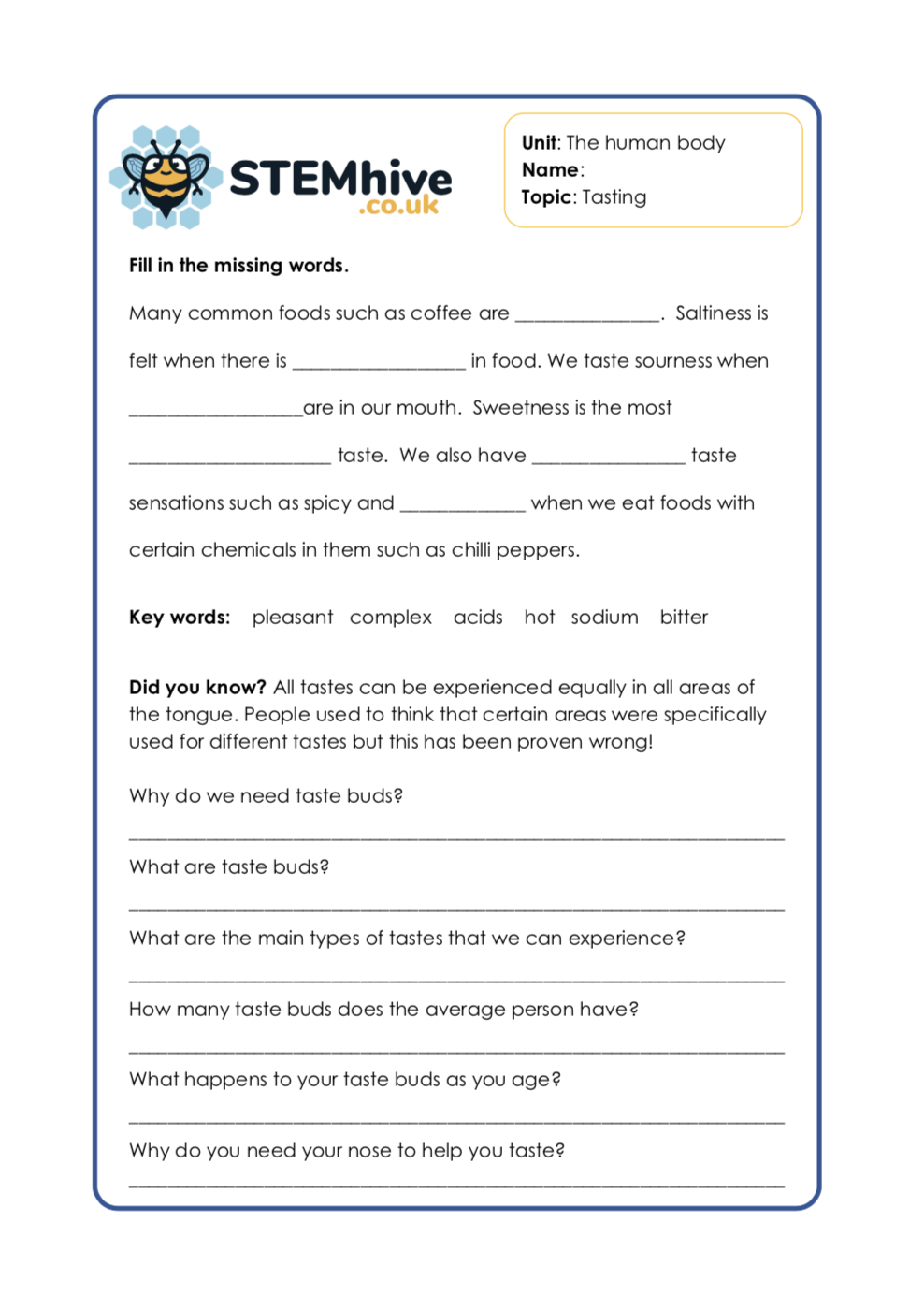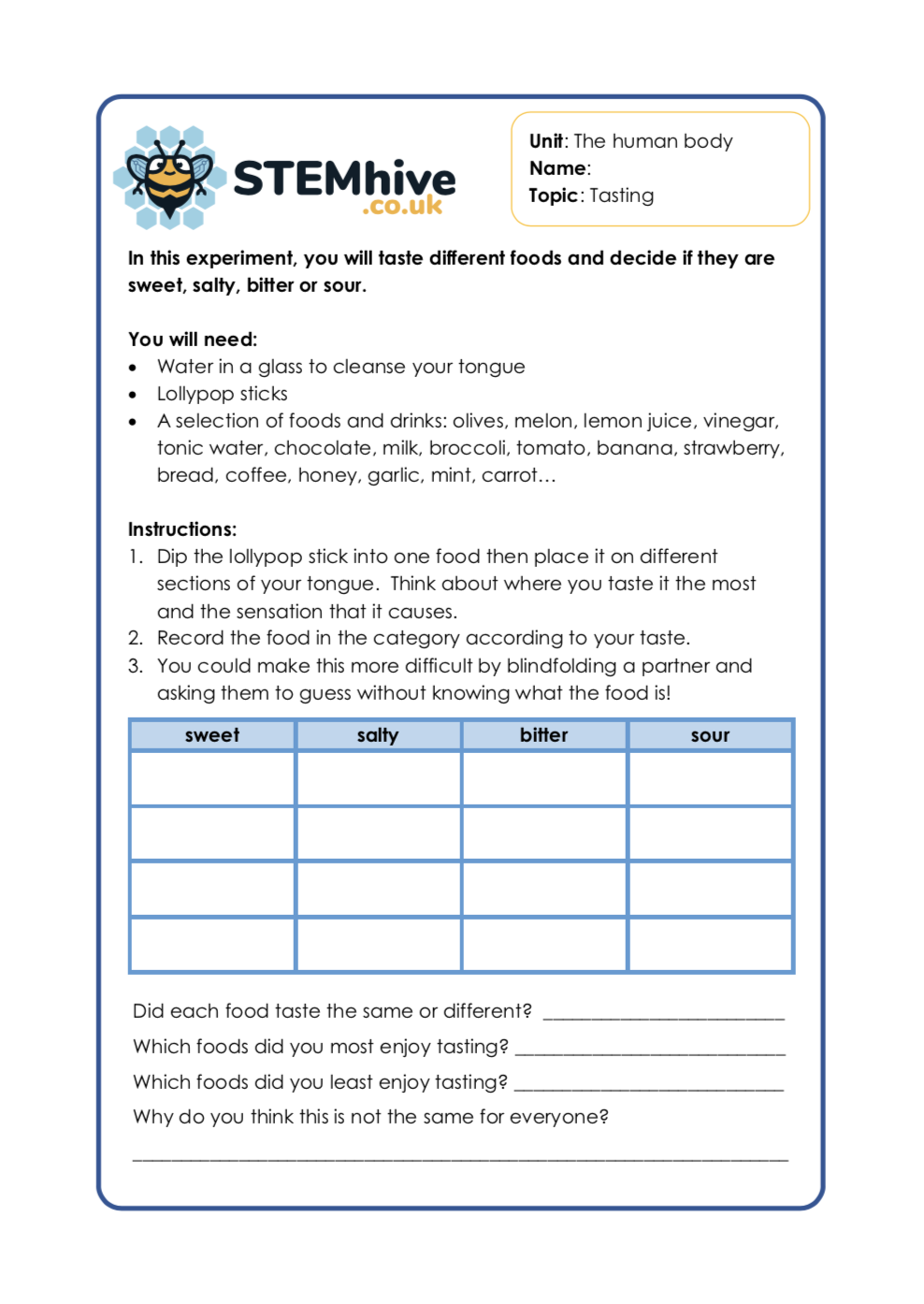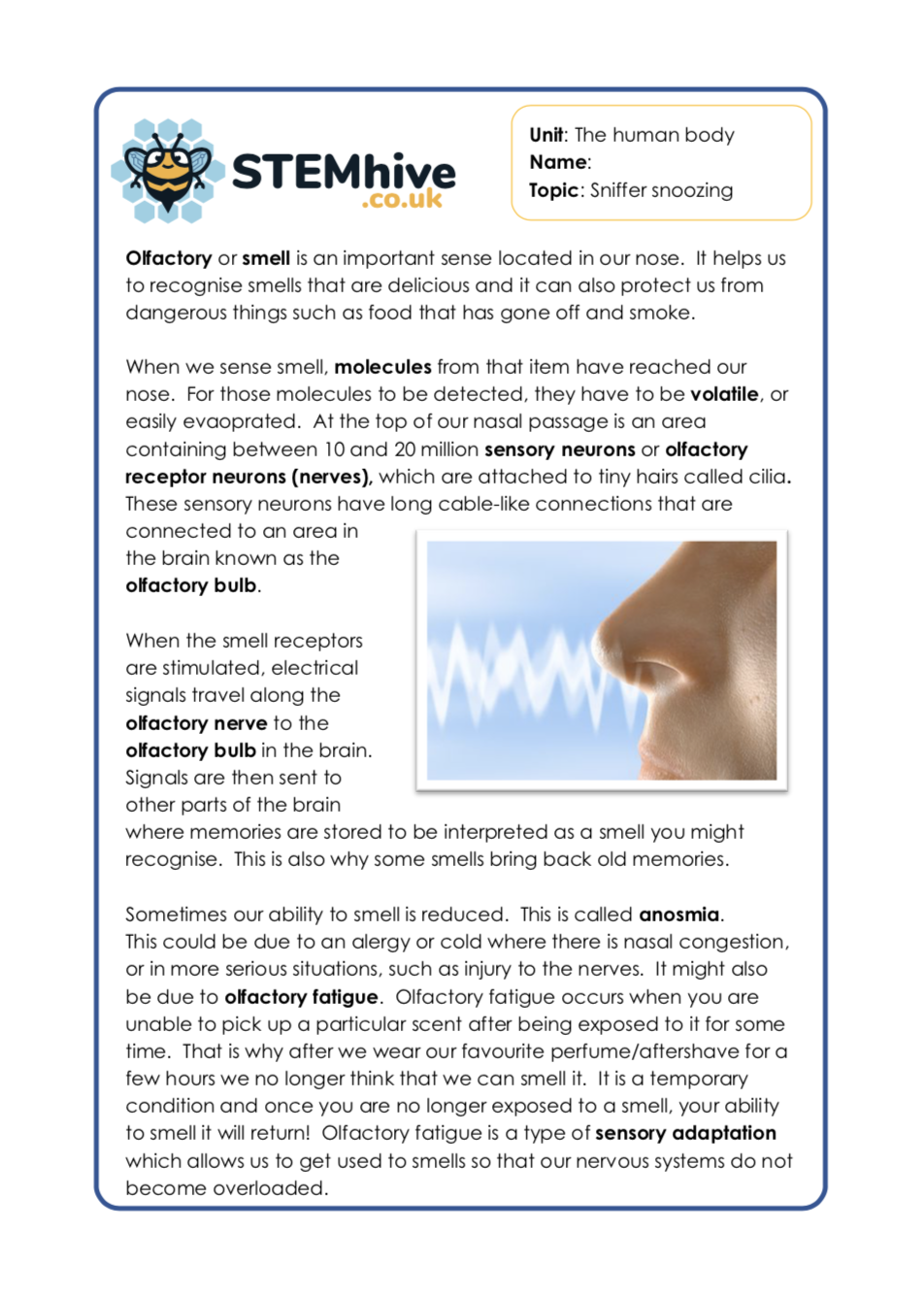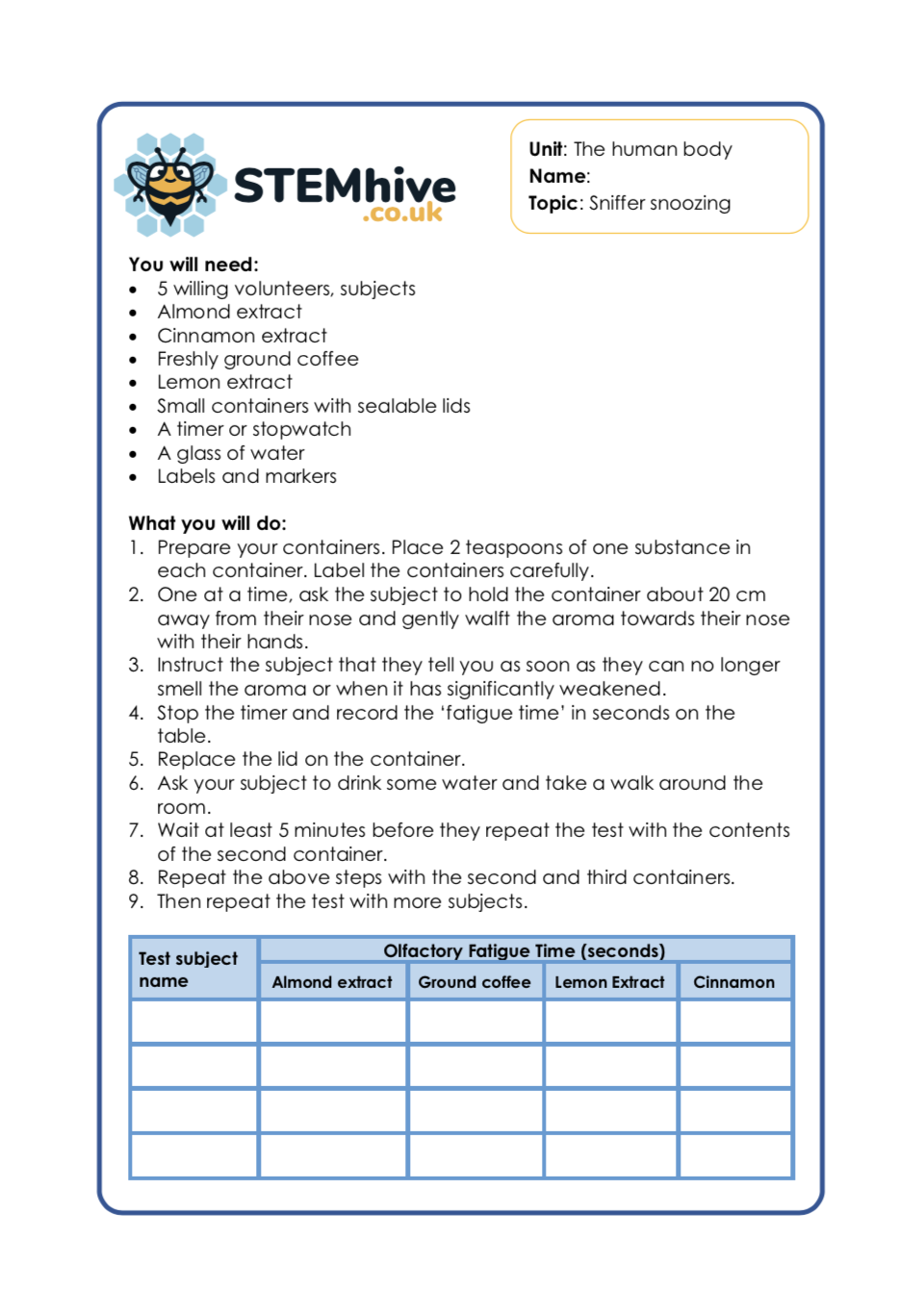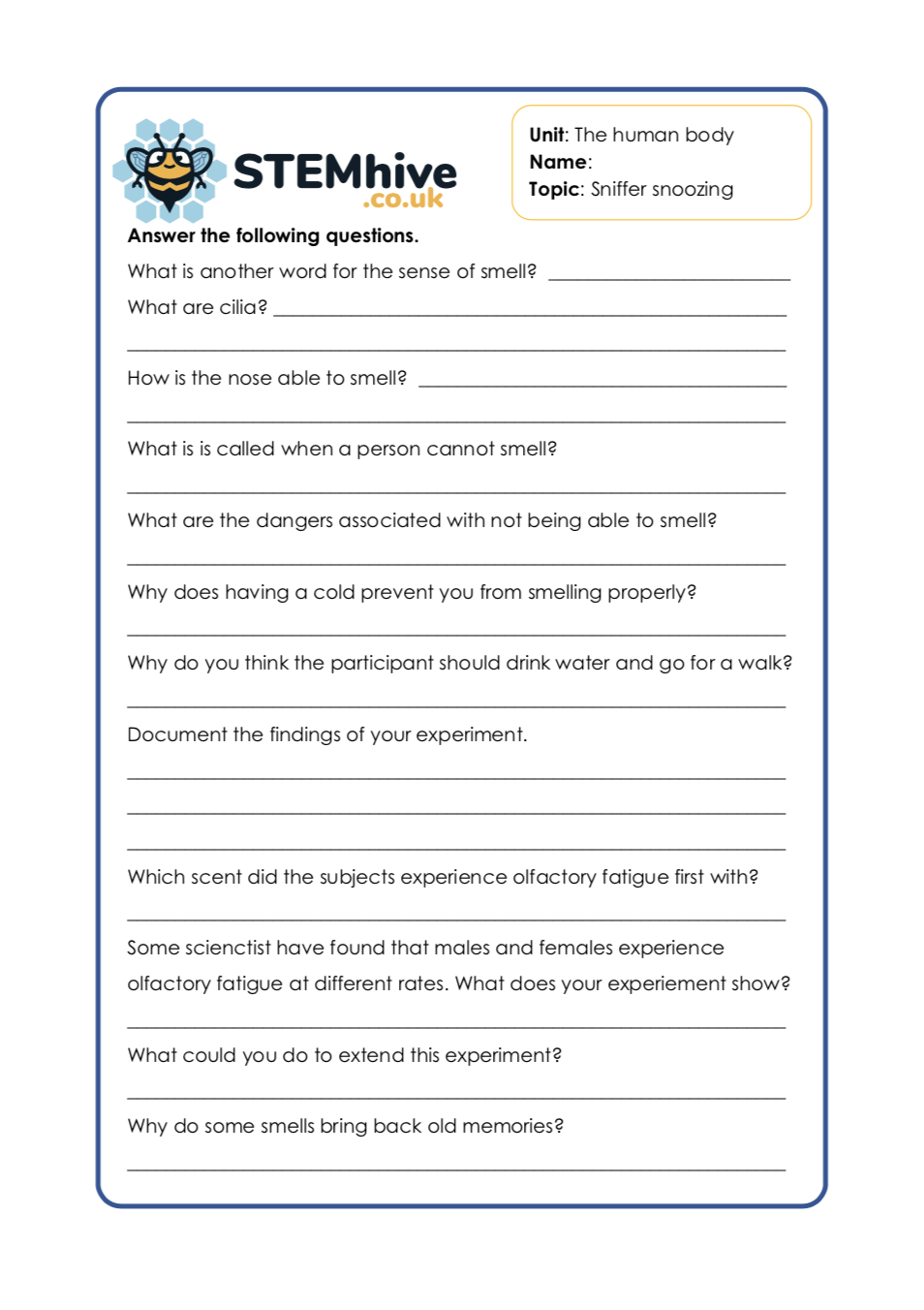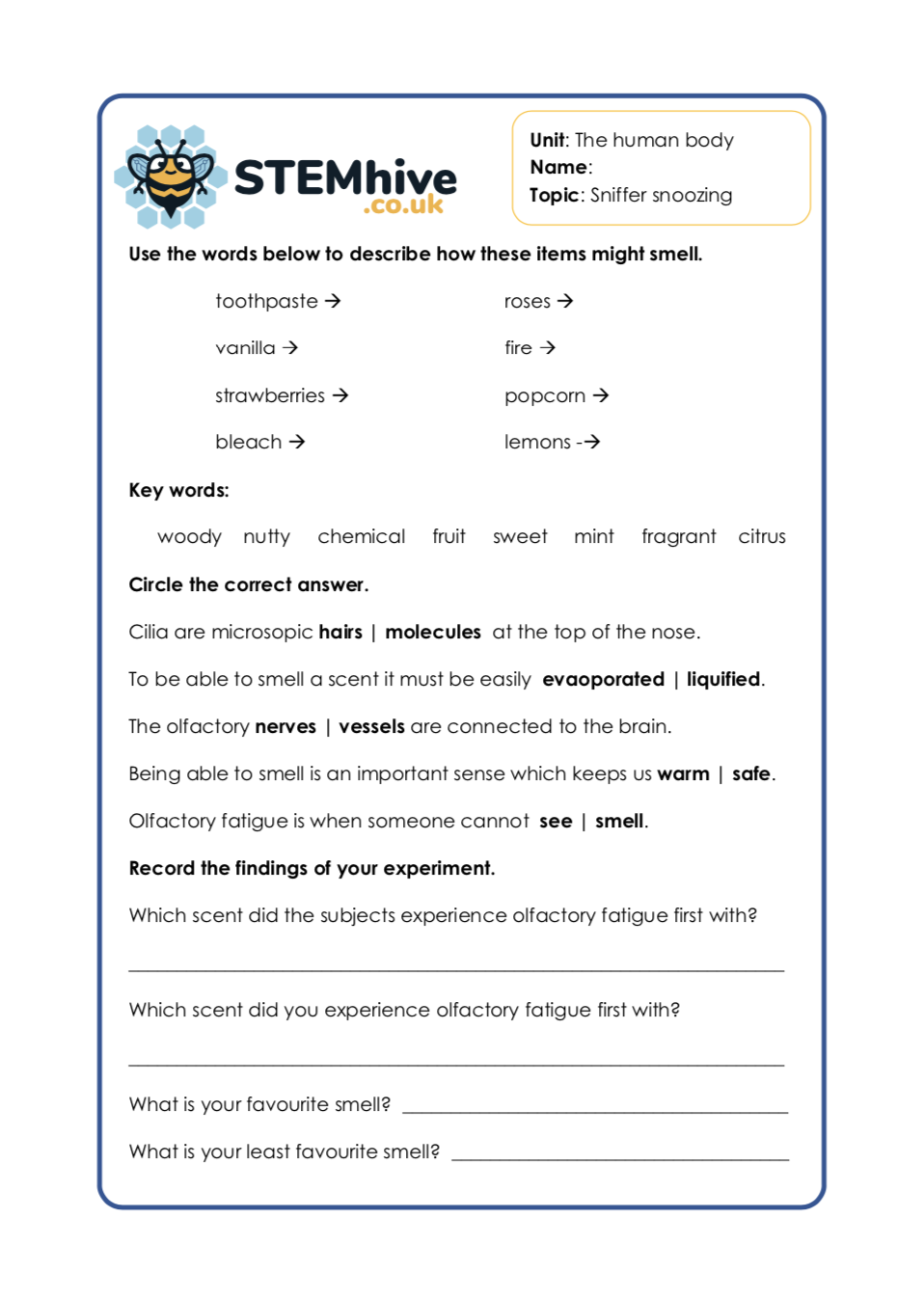The Human Body
Main Focus: The Eye
This resource explores the eye and your KS2 class will label the image and write a short description about each part.
This resource covers the: retina, pupil, cornea, iris, lens and optic nerve.
We have also differentiated this resources so you can choose which would best suit your class.
Unlock ResourceMain Focus: The Eye - Part 2
In this resource, your class will label the parts of the eye and complete the passage explaining the function of each.
The eyebrows and eyelashes help to keep debris, dirt and liquids out of our eye.
The eyelid protects the eye, removes debris and disperses the tear film across the surface of the eye.
The iris and pupil control the amount of light that reaches the back of the eye. When it is dark, the pupil will be large allowing more light to enter the eye. When it is bright, the pupil will be smaller reducing the amount of light that enters the eye and protecting the back of the eye.
The sclera is known as the white of the eye. It provides support for the eyeball and helps it to keep its shape.
Main Focus: Healthy Teeth - Eggshells Experiment
This STEM experiment tests the effect of different drinks on the colour of white eggshells. It will help your KS2 class to understand how sugary drinks affect teeth and can cause tooth decay. In this activity, they will be encouraged to think about ways of keeping their teeth healthy by choices they make with foods and drinks.
We have a range of printable activities for this experiment so scroll through and see if it is what you’re looking for.
Main Focus: The Ear
Sound is a type of energy and is made up of vibrations, or sound waves. The stronger the vibrations, the louder the sound will be.
When sound reaches our ear, it must travel through the ear and be converted from a sound wave to an electrical impulse. The ear enables this to happen.
In this activity, your KS2 class will learn all about the parts of the ear and its function.
Unlock ResourceMain Focus: Bionic Hand
Moving muscles in the body is a complicated process and many move without us even thinking about them! Our heart pumps without us telling it to do so, and when reach out to lift a pencil, we don’t have to tell our fingers how to move, they simply ‘know’ what to do.
Bionics is the use of designs and ideas from nature which help the development of systems and technology. In medicine, bionics allows the replacement or enhancement of body parts including organs and limbs. This enables the design and creation of bionic prosthesis to allow people with disabilities to recover some abilities.
In this STEM activity, your Year 5 | Year 6 class will build a bionic hand and then test it!
Unlock ResourceMain Focus: Understanding Blood
This is another great activity to complete with your class when completing a topic on The Body.
Your class will learn all the key vocabulary and terminology linked to blood and circulatory system including: veins, arteries, capillaries, platelets, oxygen, haemoglobin, cells and more.
All the key vocabulary and parts are put into a simple explanation to give your class knowledge and develop their understanding.
Unlock ResourceMain Focus: Breathing and Lungs
Lungs are balloon-like organs which are used for breathing. They are part of the body’s respiratory system. All animals that have a backbone and breathe air have lungs. When we inhale (breathe in), air filled with oxygen flows into our lungs and when we exhale (breathe out), we push that air back out of our lungs.
In this science experiment, your class will make model lungs and observe the changes that take place in the lungs and diaphragm.
Main Focus: Digestion
Unlock Resource
Main Focus: Tasting
This resource encourages your class to learn more about the science behind how our tongues work as well as completing a few different activities and a tasting experiment to classify foods.
Our tongues are packed with tiny little taste buds which help us to taste our food and protect us from eating something harmful. But did you know that not all people taste food the same?
Your tongue is covered in little bumps called papillae and most of them contain taste buds. Taste buds are sensory organs found on your tongue. They allow you to experience tastes that are sweet, sour, salty and bitter along with more complex tastes such as savoury and spicy.
Unlock ResourceMain Focus: Smelling
Olfactory or smell is an important sense located in our nose. It helps us to recognise smells that are delicious and it can also protect us from dangerous things such as food that has gone off and smoke.
When we sense smell, molecules from that item have reached our nose. For those molecules to be detected, they have to be volatile, or easily evaoprated. At the top of our nasal passage is an area containing between 10 and 20 million sensory neurons or olfactory receptor neurons (nerves), which are attached to tiny hairs called cilia.
Download our resource pack to help your class with their understanding and also complete an experiment to put the science to the test.
Unlock Resource
